



•
•








•
•



To list your group’s event on a space available basis, please send your event notice with date, time, place w/city and state, contact name, and phone number to: Calendar, In status before attending.
Apr 1-6: SUN ‘n FUN Aerospace Expo, Lakeland, FL, U S Navy Blue Angels, F- 16 Viper Demo Team, F35A Lightning II Demonstration Team, Titan Aerobatic Team
5-6: Aviation Nation Air Show, Nellis AFB, NV, U.S. Air Force Thunderbirds, F-22 Raptor Demonstration Team
5-6: Wings Over Homestead ARB, Homestead ARB, FL, F-35A Lightning II Demonstration Team, U S Army Parachute Team Golden Knights
12-13: Southern California Airshow at March Field 2025, Riverside (March ARB), CA, U S Air Force Thunderbirds
12-13: MCAS Beaufort Air Show, MCAS Beaufort, SC, U S Navy Blue Angels, F-16 Viper Demo Team, U S Army Parachute Team Golden Knights
12-13: Altus Air Force Base Open House & Airshow, Altus AFB, OK
12: Thunder Over Louisville, Louisville, KY, F-35A Lightning II Demonstration Team, Starlight Aerial Productions
12: Great Texas FreedomFest, San Antonio, TX
19-20: Dyess 2025 Open House, Dyess AFB, TX, U S Air Force Thunderbirds, Ace Maker Airshows
25: US Aircraft Expo, White Plains, NY, https://usaircraftexpo com/white plains2025/
23-26: Feria Aeroespacial Mexico, Santa Lucia AB, MX
26-27: Air Power Over Hampton Roads, Langley AFB, VA, U S Air Force Thunderbirds, F-22 Raptor Demonstration Team, U S Army Parachute Team Golden Knights
26-27: Air Dot Show Augusta, Augusta, GA, U.S. Navy Blue Angels
May 2-4: Red, White and Blue Airshow, Monroe, LA, F-35A Lightning II Demonstration Team, U S Army Parachute Team Golden Knights, USMC MV-22 Osprey, GhostWriter Airshows, RJ Gritter Airshows, Titan Aerobatic Team
3-4: Air Dot Show Fort Lauderdale, Fort Lauderdale, FL, U S Navy Blue Angels, F-22 Raptor Demonstration Team
3-4: Wings Over Wayne Air Space &
Technology Expo, Seymour Johnson AFB, NC, U S Air Force Thunderbirds
3-4: Wings, Tracks, and Wheels 2025, Planes of Fame Museum, Chino, CA planesoffame org
9-10: Wings Over South Texas (WOST), NAS Corpus Christi, TX
30: Flightpath to Net Zero international conference, Montreal, CAN www.aero podium.com/saf
Jun 6: US Aircraft Expo Pacific Northwest, Bozeman, MT https://usair craftexpo com/bozeman
7-8: Beale Air and Space Expo, U S Air Force Thunderbirds
17: 48th Air Race Classic (ARC), Fairhope, Alabama, airraceclassic org
21-22: Centerpoint Energy Dayton Air Show, Vandalia, OH
July 9-12: Pensacola Beach Air Show, US Navy Blue Angels, Pensacola, Florida
22: International conference on Aerospace and Aeronautical Engineering 2025, Netherlands, webinar, aeronauticalconference.com
21-27: EAA AirVenture, Oshkosh, WI
Aug 8: Palo Alto US Aircraft Expo, Palo Alto, CA, usaircraftepo com/ paloalto 2025/
9-10: Rumble Over the Redwoods, Humboldt County Airport, rumbleovertheredwoods com
16-17: Wings Over Camarillo, Camarillo, CA https://wingsovercamarillo com
2-4: Commercial UAV Expo, Caesars Forum, Las Vegas, NV, Commercial Drone Exhibits and Demonstrations
www expouav com
10-14: National Championship Air Races, Roswell, NM.
19: US Aircraft Expo Denver, CO, Sheltair Aviation, Scottsdale, AZ usaircraftexpo com/denver2025
Oct 3-5: Pacific Air Show Huntington Beach, pacificairshowusa com
10: US Aircraft Expo San Diego, Carlsbad, CA, usaircraftexpo com/san diego2025/



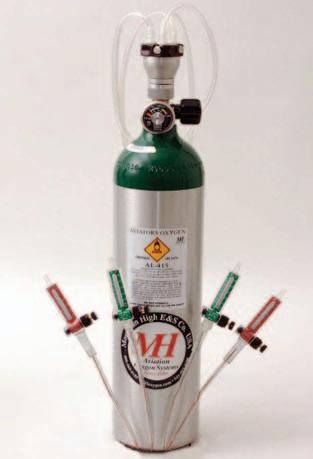


In recent years, the drop industry (referring to drop servicing or dropshipping, where businesses offer services or products through a third-party fulfillment, often in conjunction with their own online fulfillment) has brought up many questions for the general aviation industry, its pilots, and enthusiasts Here at In Flight USA, we know that many of our pilot readers are interested in drones and have become certified drone pilots We also know that many pilots and aviation employees worry about drones entering the airspace and causing problems for manned aircraft
But through all of this, many of our readers and followers have found a harmony that brings a lot of fun to those who like to fly both on the ground and in the cockpit Some of our very own writers and photographers have used drones to capture quality aerial images That is why we are proud to partner with and feature Ruko in our April 2025 issue This drone manufacturer brings easy-to-use drone toys that allow amateurs to take great photos while getting an on-the-ground piloting experience


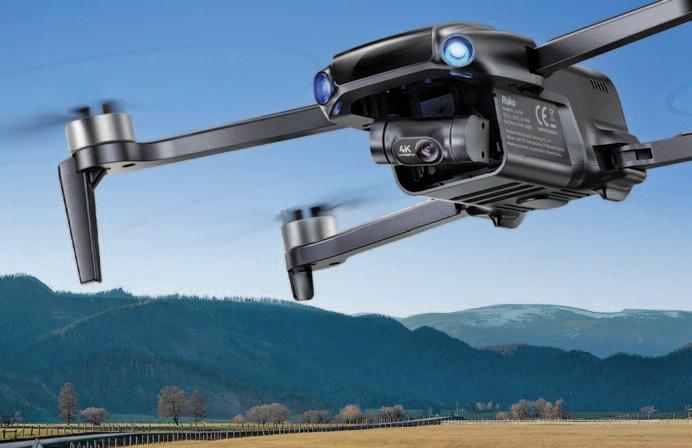

Ruko’s U11MINI4K is a compact powerhouse drone
As the drone industry becomes more prevalent and excites more pilots to get involved, there are many questions that should be answered With many brands of drones to choose from, how do you know which one is the best? Ruko has




years of experience with photography and makes a sleek product that is easy to handle for both amateurs and professional photographers
Ruko’s very own Charlene is quite an expert on the subject She said that in
recent years, the drone industry has made significant advancements, bringing exciting new possibilities across various fields, such as emergency response and inspections As a responsible drone company, Ruko is committed to promoting safety and sustainability within the industry Ruko will launch a new drone, U11MINI 4K, in April Ruko U11MINI 4K
Continued on Page 13

• Advance up to 95% of invoice amount
• No minimums – fund a single invoice
• Simple, straightforward contracts
• Expand into new markets
• Fast approvals – just 2 days
• Flexible underwriting
At Nexus Private Equity, we specialize in acquiring and growing aviation businesses. With deep industry expertise and strategic capital, we provide owners with seamless transitions while unlocking new growth opportunities. We invest in established aviation companies.

ACOMPACT POWERHOUSE REDEFININGTHE FLYING EXPERIENCE
ByAnnamarieBuonocore Page45
SlingPilotAcademyUnveilsLongBeachExpansion,Quieter
FAARulesAvgasBanViolatedGrantAssurance....................16 Calif.CapitalAirshowReachesNewHeights,Record-Breaking Attendance..............................................................................20 NorthDakotaTeacherNamedCrossfieldAerospaceEducator oftheYear................................................................................21 EAAAviationMuseumReceivesRe-Accreditation..................22 HousePrioritizesATCModernization,Staffing........................25 FAAAnnouncesPromisingStarttoATCHiringSupercharge26 Whirly-GirlsInt’l.Awards2025Scholarships............................28 PacificCoastDreamMachinesIsBack....................................32 ClearLakeSplash-InShowcasesSeaplaneInnovation..........35 AOPARecognizesTopFlightInstructors,Schools..................38 NationalPauseDayforGeneralAviationSafety.......................40






ByMikeTaylor StorybeginsonPage40

AOPAEditorial:InTransition
ByDarrenPleasance,President&CEO ...........................8
Editorial:OpenLettertotheHouseAviationand DOGESubcommittees
ByEdDowns ................................................................9
Verticon2025inReview
ByCynthiaWheatleyGlenn ............................................14
Part1:ClearingtheAir–UnleadedFuel GainingApproval
ByCynthiaWheatleyGlenn ............................................19
GlidingintheEifel…Celebrating50Years
ByMikeTaylor ..............................................................40






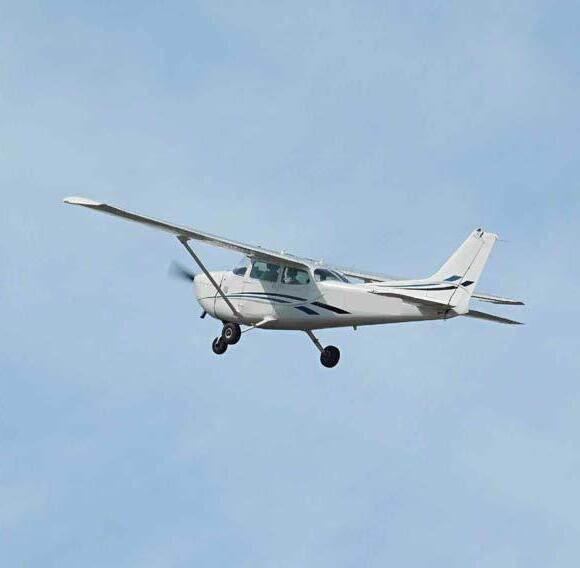




















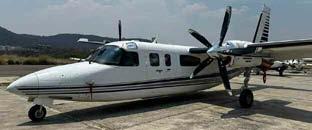











Okay, the title is a bit misleading
This column space is typically dedicated to a learning message, often based upon this writer ’s long flying history and remembrance of my bonehead errors from which others may learn The recent hard landing (being kind!) in Toronto by the Delta Airlines’ regional carrier involved a crosswind, sparking a few memories at this end Of course, we can get into the typical discussion of “which technique in managing a crosswind is best.”
• Hold a crab and then kick it straight at the last second, or
• Hold a crab and then lower the upwind wing and pull the nose around with the rudder, or
• Make wheel landings in taildraggers





You have probably read dozens of articles about which technique is best and received strong opinions from various flight instructors Frankly, this writer has used all of the above, often dependent upon the airplane being flown and the landing surface While often favoring the “wing low” method, do not try that in an airplane with low-mounted engine pods, like a Boeing 737 (and many others), as you will hear a very expensive noise.
In looking back to personal experiences that could be of possible benefit to readers, I realized the best tales were about the times I avoided a potentially dangerous crosswind or forgot that crosswinds are not just a problem when landing, but also when simply taxiing back to the hangar Perhaps you can learn, as I did over the years, that the best crosswind landing you will ever make is the one that you don’t do
This writer ’s first lesson came while in the control tower cab at Van Nuys Airport in the early 1960’s Back then, instructors would often drop a first-time solo student off at the base of the control tower and then wander up into the cab to chat with our FAA buddies… and have radio contact with the student, if needed. There was a bit of a crosswind, but my student was well prepared and sharp, no problem While watching my guy performing well, another plane, a very rare and unusual Convair L-13 (Google it!) entered the pattern, asking about the wind several times
The L-13 gent then announced that
By Ed Downs
the reported winds were above the crosswind limits of his rare warbird The tower asked what his intentions were, and he responded he would attempt a landing I immediately jumped in, as Van Nuys (at the time) had an old East/West runway that was closed, but serviceable I asked my tower buddy to tell him to use the old runway, having no crosswind I was informed that they could not initiate that solution but would certainly allow it if requested by the pilot. I even volunteered to call the L-13, simply as a CFI, but FAA policy would not permit such intervention from the cab
The L-13 landed, lost control and was badly damaged This sad memory emerged more than 40 years later as this writer approached Rapid City Airport (KRAP) for a fuel stop while enroute to EAA AirVenture ATIS favored the primary ILS runway, 32, but a nasty wind was blowing from the North/East with gusts up to 50 knots well beyond the safe crosswind capabilities of my STOL taildragger While arriving, I heard a regional airliner execute a missed approach and several light planes abandon their landings Upon checking out the airport diagram, I noted a seldomused runway 5, having almost no crosswind… close to an FBO (I called on UNICOM) who had offered wing-walker help A quick call to the tower with a LAHSO request for runway 5 was immediately approved and all ended well I still feel bad about that L-13
1971 was a good time for this writer Having just left the Boeing 747 certification program while working for TWA, I had been assigned to the Lockheed L1011, tasked with flight test engineering and crew training My beloved Ercoupe was now based at my old home airport, Van Nuys (within walking distance) with my duties ranging between Burbank and Air Force Plant 42 in Palmdale, Calif , an hour drive through mountains to the Mojave Desert. But the morning (6:00 a.m.) of Feb. 9, 1971, was not a good day as the earth shook violently, buildings toppled, dams failed and the highway structure between the San Fernando Valley and Palmdale was destroyed Ordered to evacuate my damaged apartment and in danger of flooding from a
Continued from Page 6
destroyed reservoir dam, that little Ercoupe became an escape vehicle to temporary housing and my only way of reaching the L1011 flight test activities in Palmdale
Regrettably, the Air Force would not allow me to use Plant 42 something about “spooky” planes, “Skunk Works” and “national security ” The only option was Gen William J Fox Airport (KWJF) in nearby Lancaster Now, “Willy J” was (and is) a great airport, with no tower at that time, but often presenting strong desert crosswinds Thinking back, the original Ercoupe (415C/D) did not have rudder pedals, with the rudder interconnected to the ailerons, beating the Cirrus to a full time yaw damper by some 65 years While crosswind capable, due to its superb trailing beam landing gear, it still remains a bit limited. I learned that by starting the landing touch down at the beginning of a runway turn-off connecting to a taxiway, I could change my angle to the runway center line by up to 45 degrees, plenty to accommodate a strong crosswind Yep, land across the wide runway! Given the high wind and low landing speed, roll-out was on the runway surface The Ercoupe is designed (given fresh shock absorbing “doughnuts”) so that with forward elevator pressure immediately after landing, the wings assume a negative angle of attack and all thought of flying, even in a strong wind, is resolved Sound a bit cavalier? Maybe, but with plenty of CTAF calls and care, I learned that one should not “lock on” to only a runway center line as the only option for landing a plane. Be current, be skilled and always have an “alternate available,” as required by FAR 103(a) Oh yes, if you hear Ercoupe fans talking about “doughnuts,” they are not referring to Krispy Kreme
A Young Eagles event ended early as words of a fast moving, dry, cold front became known, a guarantee of very strong, gusty winds Leaving the rural airport early, this writer headed home in the lightweight STOL plane, landing at my home airport as the frontal dust cloud could be seen approaching; A gusty, but non-event, landing ended with a 90degree turn off the runway, close to my hangar. Moving much faster than anticipated, a powerful gust hit my tri-gear plane on the left side. I smashed the left brake and used full control input to swing
the nose into the wind in an effort to “fly” my way out of danger But the left tire was now off the ground, the nose wheel cantered the wrong way and a slow roll to the right was underway.
Realizing the plane was being flipped over on it’s back, I killed the engine and switched off electrics before a load “THUD” left me hanging by my aerobatic seat restraints I had finally been upended by a crosswind, sadly realizing that if I had simply remained on the runway just a few seconds longer, I could have added power and flown away from the danger With fuel leaking from the vented fuel caps, I was left to ponder how to release the seat restraint without breaking my neck and look “cool” as I exited the plane One learns early in the test pilot game, looking “cool” after a screwup is an important test of your professionalism. Kind of like a cat sleeping on top of the TV who accidentally falls off. They never look surprised, lick their paws, roll around , gradually get up and saunter away, clearly saying, “I meant to do that ” The seat belt release was successful, but my glasses fell to the top of my head (remember, I am upside down) and in quickly trying to recover them, my awkward hand movement resulted in me sticking my thumb up my nose, resulting in a massive nosebleed! As “rescuers” arrived, I was rumpled, bleeding and not cool I tip my hat to cats
So, what is the bottom line to this lesson? If wind is not in your favor, ask for help or alternatives If help is not offered, you, as PIC, can make the call. Don’t let the centerline intimidate you into exceeding your limits or those of the plane If need be, fly to another airport been there done that Crosswinds on a taxiway can be just as dangerous as those blowing down a runway If in doubt, point the nose of the airplane into the wind and be ready to go airborne if necessary, even if not on a runway been there done that Always keep in mind that the “demonstrated crosswind limit” in your POH was flown by a highly-qualified test pilot who might have made several passes to get the job done been there done that You are not going to duplicate that performance Finally, as suggested in the beginning of this column, the best crosswind-landing story you may have to tell is about the crosswind landing you did NOT have to make.






















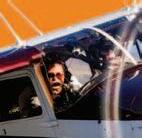



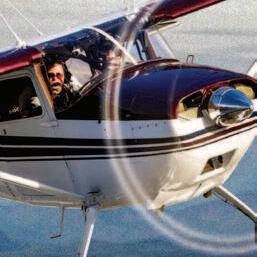














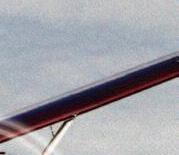












By Darren Pleasance AOPA President and CEO
BEFORE I TOOK the helm as AOPA president this year, and as an active pilot, I was well aware of ongoing efforts to transition to 100octane unleaded avgas The FAA Reauthorization Act of 2024 supports the continued availability of 100LL avgas until the end of 2030, or when a certified unleaded alternative is available at airports (Alaska, a state heavily reliant on piston engine aircraft, has been given an extended timeline protecting continued availability of 100LL through the end of 2032 ) Given the importance of this transition to our industry and hearing of some confusion among pilots, I assure you that I firmly believe in not only the importance of getting to an unleaded avgas future, but also the need to be both transparent and factual as we navigate this important journey AOPA’s position on this journey is clear:
First, AOPA does not support one unleaded fuel over another The marketplace (pilots) will ultimately determine which fuels are successful and which are not
Second, AOPA is a strong proponent of a “burn and learn” approach to newly authorized unleaded fuels to help accelerate a transition to an unleaded future As we did with a dual-fuel Beechcraft Baron last year (see “Unleaded Fuel: What We’ve Learned,” November 2024 AOPA Pilot), AOPA will continue to demonstrate new unleaded fuels as they become available, and we’ll provide full transparency on our results Our experience with General Aviation Modifications Inc ’s G100UL has been widely reported and was positive overall. Swift Fuels’ 100R has been authorized by the FAA for use in Cessna 172R/S airplanes with Lycoming IO-360-L2A engines As more aircraft are added to the approved model list, we’ll be demonstrating 100R and will share our experience with the industry Lyondell/VP has also submitted a fuel to Piston Aviation Fuels Initiative for testing, and we’ll look forward to the opportunity to demonstrate that fuel as well once it’s approved by the FAA
Third, a key tenet of the “burn and learn” approach is a rapid and transparent assessment by both the FAA and fuel producers to quickly determine if any reported concerns about using 100-octane
unleaded avgas are in fact a result of using the new fuel, and if there are mitigation options that should be shared with other users We owe it to the entire industry to quickly assess issues as they arise and respond accordingly as we learn AOPA will also continue to partner with all key stakeholders across the aviation ecosystem to advocate for open and transparent materials compatibility testing throughout the supply chain
This challenge is somewhat amplified for the homebuilt community because of the diversity of materials used, placing an extra burden on experimental aircraft operators to make these assessments themselves The Experimental Aircraft Association is working on guidance to help owners of these aircraft navigate this journey effectively
While the GA industry works toward a transition to unleaded avgas by 2030, aircraft must be able to rely on leaded avgas at least until an unleaded alternative is available at airports across the country In Colorado, opposition from AOPA and others successfully removed legislative language banning leaded avgas GA supporters in Washington state defeated a bill that would have imposed
myriad unfunded mandates on the state aviation division to address lead in fuels AOPA co-led the effort with the Washington State Aviation Alliance by urging legislators to partner with the aviation community toward the common goal of removing lead from avgas in a safe, smart manner And in California, AOPA led an aviation industry coalition to drastically amend California legislation seeking to ban the sale of 100LL at airports beginning in 2026 New language now aligns any fuel sale prohibition with the FAA Reauthorization Act of 2024.
At AOPA, we’ll tirelessly advocate on behalf of all our members – and the general aviation industry more broadly –for a transparent approach to getting safely to the unleaded future we’re all committed to
If you’ve used 100-octane unleaded avgas in your airplane, I encourage you to share your experience – good or bad –with me online (aopa org/unleadedavgas experience)
darren@aopa org
Darren Pleasance has flown over 8,000 hours in more than 80 different types of aircraft
By Jay Wiles AOPA
The Aircraft Owners and Pilots Association (AOPA) in a statement on March 5 welcomed the FAA’s decision to again postpone proposed changes to the airman medical certification process If implemented, the FAA’s proposed changes would lead to a significant increase in pilot medical denials
In 2024, the FAA proposed ending its longstanding practice of deferring incomplete medical applications to instead issue immediate denials while providing steps for reconsideration These changes were scheduled to take effect on Jan. 1. AOPA, along with a coalition of aviation organizations, suggested to the FAA Federal Air Surgeon, Dr Susan Northrup, that any denials could cause unintended consequences
and increase complexity for applicants. Subsequently, the proposed changes were delayed until March 1
On Feb 28, the FAA announced it would again delay the implementation of the proposed denial policy and instead hold a listening session to “get feedback from stakeholders before making any decisions,” according to an FAA statement The listening session with industry is scheduled for April 23
“We appreciate the FAA’s efforts to seek additional input from AOPA and others Our goal is to help pilots by working with the FAA to make the medical certification process more efficient while eliminating unnecessary burdens on applicants. At the same time, AOPA will continue its efforts to help modernize the FAA’s medical processes and systems, which are long overdue,” said AOPA President and CEO Darren Pleasance
FAA Statement on Issuing Airman Medical Certificates Feb 28, 2025
The Federal Aviation Administration (FAA) will hold a listening session on April 23 to get input on possible changes to the process for issuing airman medical certificates
The agency is considering issuing initial denials with specific guidance for reconsideration to pilots who provide incomplete examinations or paperwork The goal is to provide the applicant with an immediate answer and clear criteria they must meet when reapplying for a medical certificate.
The FAA initially planned to implement the change on Jan. 1 but delayed until March 1 However, we (FAA) want to get feedback from stakeholders before making any decisions The listening ses-

FAA will hold a listening session on April 23 to get input on possible changes to the process for issuing airman medical certificates Visit faa gov for more information on the session (Courtesy AOPA)
sion is scheduled for April 23 at the FAA headquarters building in Washington, D.C. We will provide additional information on how to attend in person and remotely in the coming weeks. Check the FAA website for updates: faa gov
Editorial By Ed Downs
The following opinions, views and comments are actually a continuation of the editorial offering in the March issue of In Flight USA, titled “Who Do we Blame?” Yes, this approach, continued from a previous editorial, is a bit different, but I hope to continue a thought process that needs further consideration Last month’s views dealt with the reality, per specific FAR’s, which makes it clear that the Pilot in Command (PIC) is truly the final authority when it comes to aviation safety. But in the month that has just passed, this writer has read numerous press releases issued by the House Aviation Subcommittee (Chairman Rep Troy E Nehls (RTX)) regarding aviation safety, almost all of which related to ATC upgrades, both in manpower and technology The Department of Government Efficiency (DOGE) House Subcommittee (Chairwoman Rep Marjorie Taylor Green (RGA)) continues to explore the massive waste, bureaucracy, and incompetence within our federal government, but has not tied any of these faults into the one bureaucracy that affects all of aviation and related safety, the FAA Given these observations, this editorial and open letter is being sent to both Committee Chairs, in the hope that those truly interested in aviation safety will take a deeper dive into the guts of our National Airspace System and all related participants
A Culture of Safety – “A Culture of Safety” is a mandated subject in all FAA approved Flight Instructor Refresher Courses (FIRC’s) By “culture,” it is emphasized that safety is not just a checklist, policy, rule, or procedure, but a way of thinking, acting, and responding to a variety of situations While the FAA website, FAA publications, a variety of FAA safety related programs, along with a countless number of regulations, all speak loudly to safety, it is this writer ’s experience as an aviation professional (aerospace, airline, charter, GA and CFI) for more than 65 years, that the intentions of safety, when translated into policies and bureaucracy, have lost their way in terms of “culture,” as high hopes are filtered through multiple divisions, regions and levels of responsibility Meaningful leadership has been lost to an almost mindless requirement to comply with
bureaucratic procedures, with “paperwork” becoming the goal, not safety This writer challenges the Chairpersons of the DOGE and the Aviation Subcommittees to look further than just unearthing economic indiscretions and waste, but to challenge the FAA with respect to the mandate of safety placed upon the Agency by the leadership of the DOT Do we truly have the right people in the right jobs, which actually create “A Culture of Safety?” One can hope that the new FAA Administrator, Bryan Bedford, is a leader in both policy and spirit.
ATC, People and Technology –
Much is being said these days about the ATC system, to the point of leading many to believe that between aggressive hiring and new technology, all will be good Regrettably, this overlooks a simple reality that was expressed to this writer many years ago while chairing an ATC committee formed by a leading airline lobby organization in Washington DC An expert in national transportation management (air, land, and sea) offered the view that managing airport capacity and air traffic presents an unsolvable problem “Gentlemen” the expert began, “with railroads, you have a single track leading to a train station that splits into many tracks. With airplanes, you have a multitude of airways leading to a single runway you are in the business of “cram and jam ” Herein lies a truth that no one wants to publicly admit; the goal of ATC is to “maximize runway utilization,” with aircraft separation being a byproduct
This is a reality that the FAA and Aviation Subcommittee must acknowledge We must accurately assess the maximum capacity of a given landing surface and then work backwards so as to manage aircraft to meet that rate DCA proved that bowing to political, passenger and airline demands for increased service must take a backseat to aircraft separation. It is vital that the FAA not simply point to upcoming technology that will supposedly solve the problem, resulting in an over-budget and greatly delayed program such as “Next Gen ” Arrival and departure rates, gate limitations and ramp space constrictions are issues well known to airlines, let’s get them in on the decision-making through a consensus stan-
Continued on Page 10


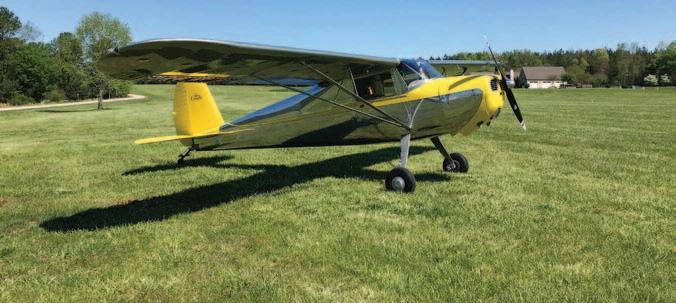



























dard process
We need to consider improvements on the ground, runways, taxiway layouts, even secondary airports to serve communities with General Aviation (GA) and business aircraft needs, complete with rapid transportation between serving terminals This writer is aware of a multitude of grants that have been given to cities, both large and small, but sees few improvements Perhaps DOGE should look into such grants have we been getting our money’s worth?









































And what about increased hiring of ATC personnel? Are we going to be happy with reading big numbers or actual results and how will those results be measured? Keep in mind, while the media nearly always relates ATC services to the 140-plus airports served by scheduled airlines, there are nearly 6,000 more airports that are regularly used by corporate and General Aviation travel Are we planning to increase human capabilities with technology, or use technology to justify decreasing skill levels now considered essential? Tough questions that must be met head on
certificates Much is said about the remarkable training offered by modern simulators, so much so that the first landing in the “real” airplane made by a Restricted ATP Airline First Officer is with a boatload of passengers onboard Is the captain of such a “first landing” qualified to instruct? FAR currency requirements now allow the use of automation in demonstrating critical flight skills No need to “hand fly” the airplane Today, pilot testing and overall flight standards are governed in nine different FAA Regions, containing 82 Flight Safety District Offices (FSDO), each managing their district’s flight schools and DPE’s to different standards One can argue that such regional services make the FAA more accessible, but the reality is that most of these offices are not open for visitation by those they serve, and FAA employees work from home. Listen up DOGE, does this sound like an efficient way to make sure pilots are well trained?
Aircraft Certification and Maintenance – Traditional maintenance training has recently been hampered by a legal opinion rendered by the FAA Office of Chief Counsel, negating the long held acceptance of “on-the-job” training monitored by experience Aviation Maintenance Technician The Chief Counsel’s office also found that training would not be allowed in certain aircraft, a finding so appalling that it was recently rescinded Does the leadership of the Aviation Subcommittee know that most FAA oversight of aircraft construction, certification and maintenance is done by designees that are often employees of the company involved?


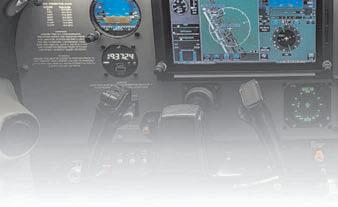


Pilot Training – When this writer began flying in 1956, only two logbook endorsements were required to complete training up to Private Pilot solo and cross country Today, 69 years later, those are the only training endorsements in my logbook, having served this writer up through ATP, advance jets and even evaluation of the NASA Orion spacecraft hot mockup. Today we have AC 61-65J, “Certification: Pilots and Flight and Ground Instructors” which has more than 90 endorsements plus references to ten supporting documents, all related to training along with the social engineering goal of removing gender references Each of these endorsements has added a layer of bureaucracy to manage the related training represented by the endorsement all in the name of “safety ” And yet, we see an airliner being hand flown by a recently trained pilot hit the ground so hard, the landing gear collapsed and a wing broke off, all while a qualified Captain, assuming the role of “instructor,” failed to correct the impending impact FAR 141 approved schools (which include all the universities and commercial training schools that run “learn to be an airline pilot” programs) are supposed to meet the highest standards But many Designated Pilot Examiners (DPE’s) note a continuing degradation of basic pilot skills as these FAR 141 operations are allowed to set standards that are not in keeping with well written Airman Certification Standards for professional
This method of FAA involvement in aircraft certification was a major contributing factor in two catastrophic airline crashes involving the Boeing 737 MAX and well publicized manufacturing quality concerns Pilot skills and ATC services are often thought of as the spearhead of aviation safety, but the fact is ATC is not sitting in the plane, and the pilot cannot even fly if the machine doesn’t work It is this writer ’s hope that aircraft and related system training will move to the forefront of FAA safety efforts This writer is not a certified maintenance tech, but I have certainly enjoyed the privileges of Preventive Maintenance as defined in FAR 43.7, taught aircraft systems to an engineering level and been a senior officer in an aircraft manufacturing business. The value of our partners at the maintenance end of the National Airspace System must not be underestimated FAA certification policies and maintenance must be a topic of significant discussion within the Aviation Subcommittee and
A coalition of 15 aviation stakeholders wrote a letter on March 12 to U.S. Transportation Secretary Sean Duffy, U S Commerce Secretary Howard Lutnick and U S Trade Representative Jamieson Greer urging them to work together with industry stakeholders to minimize disruptions in the aviation supply chain
“The aviation supply chain involves tens of thousands of suppliers from all over the globe which provide parts, platforms, and systems that require safety approval for use and installation, all of which may not be easily replaced or substituted,” the groups wrote “Given this reality, it is essential that both government and industry work together to minimize cost and availability disruptions in the aviation supply chain, which in many cases cannot be easily or quickly addressed We believe such dialogue and analysis will benefit the competitiveness of the U S aviation manufacturing and maintenance sectors and will be critical as the industry continues to innovate and contribute positively to the U S balance of trade ”
The coalition encouraged Secre-
taries Duffy, Lutnick, and Ambassador Greer to work with industry and Congress to support policies and actions focused on strengthening aviation safety agreements, policies and investments to bolster innovation, as well as measures to address specific aviation supply chain challenges
More specifically, the coalition requested to meet with the Trump Administration to discuss the state of the aviation industry and recommendations to move it forward Additionally, while the administration considers all relevant policies to bolster industry competitiveness, the coalition requested an aerospace exception from tariffs to ensure there are no unintended consequences to the supply chain.
To view the full letter, go to h
ariff-Supply-Chain-Assn-Ltr-031225 pdf
Stakeholders signing the letter include:
Aeronautical Repair Station Association
Aircraft Electronics Association
Aircraft Owners and Pilots Association Airlines for America
Air Traffic Control Association
Cargo Airline Association
Experimental Aircraft Association
General Aviation Manufacturers
Association
Light Aircraft Manufacturers Association
National Agricultural Aviation Association
National Air Carrier Association
National Air Transport Association
National Business Aviation Association
Professional Aviation Safety Specialists
Vertical Aviation International
Museum and event open at 11am
Open Cockpit is when the museum’s visitors can view our famous aircraft including A-3 Skywarrior, A-4 Skyhawk, A-6 Intruder, A-7 Corsair, Harrier jump-Jet, Hiller UH-12 E Helicopter,T-39 Saberliner, Mustang P-51 3⁄4 scale, Cessna 0-2, and Mig-15.
Flying Boat walk through tour for an additional fee.
•Color Guard
•Alfredo's Catering will be o ering refreshments for purchase.
•Live music by The Friends of Ken Band
•Oakland Airport Fire Department display.
•European Train Enthusiasts Exhibit
•Southern Alameda county radio controllers model aircraft exhibit
•Tesla Cyber Truck and Tesla Y display
•Ham Radio demonstration
•Simulators available for an additional fee

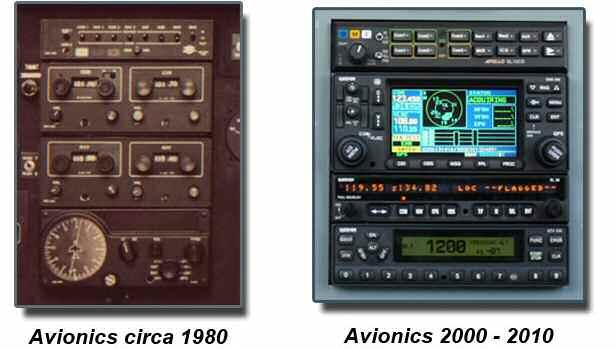


Continued from Page 10
DOGE, with considerable thought given to input from industry consensus sources. Pilot and ATC Health – The National Airspace System is only as healthy as those to participate in its operations The Aerospace Medical Certification Division of the FAA, under the leadership of Dr Susan Northrup, Federal Air Surgeon with Dr David M O’Brien, Manager of the Aerospace Medical Certification Division (pilot medical certificates) are tasked with ensuring that both pilots and air traffic controllers meet specific medical standards Regrettably, it is this division that needs the greatest scrutiny with respect to the concept of establishing a culture of safety
The Class medical structure is based upon late 1930s standards, originally intended for military applications. The Third Class medical has been rendered obsolete by BasicMed, Sport Pilot and the upcoming MOSAIC (Modernization of Special Airworthiness Certification) NPRM MOSAIC potentially eliminates the need for a Third Class medical certificate, but a “one time” class medical is still required purely to preserve a legacy bureaucracy This is truly a DOGE issue
The FAA website extols the words of Dr Northrup, “My primary objective as FAS is to ensure that we have the safest National Airspace System in the world, I remain firmly committed to the policy of getting as many airmen into the air as safely as possible ” The fact is medical denials have tripled in the last three years Keep in mind, a “denial” prevents any further PIC activities and requires legal action to appeal, not medical assistance. It is well known that more than half of all professional pilots and an equal number or amateur pilots quietly admit to omitting, outright lying or self-medicating in order to avoid Medical Division action against them Such behavior, perceived as needed to protect huge investments in time and money, certainly warrants a closer look by
the Aviation Subcommittee and DOGE Alternatives to federally-managed good health are readily available through the Operations/Specifications documents required of commercial operations and private practice for non-commercial flying all encouraging good medical care without the fear of punishment for exercising good health decisions
While it may appear that this writer has a negative view about much of what the FAA does, such is not the case Having begun my flying career under the jurisdiction of the first federal aviation authority, the Civil Aviation Administration (CAA), created in 1938, I have seen numerous changes and challenges over the years
Many have met with skill and dedication
But recent years have seen the growth of bureaucracy and loss of contact with those of us who ARE the National Airspace System. It has become nearly impossible to discuss issues or seek meaningful help from FAA staff The Medical Division has become feared, and is a subject often covered during pilot training in the context of avoidance It is this writer’s belief that DOT can do better, the FAA can once again become a partner in the “Culture of Safety ”
So, there you are, Rep Troy E Nehls and Rep Marjorie Taylor Green, this is your leg Let’s see if those committees of yours can truly be effective
Please feel free to forward this editorial, and/or your personal comments to the following addresses
Hon. Marjorie Taylor Green
Washington DC Office 2201 Rayburn Building Washington, DC 20515
Hon Troy E Nehls
Washington DC Office
1104 Longworth House Office Building Washington, DC 20515
Phone: (202) 225-5951
1104 Longworth House Office Building
The Federal Aviation Administration (FAA) has implemented a program strongly advocated for by the Aircraft Owners and Pilots Association (AOPA) that allows aircraft owners to request that certain personal information be kept private, including their name and address AOPA advocated for pilot privacy in
last year ’s FAA Reauthorization Act of 2024 Having started on March 28, as a result of this congressional action and the FAA’s implementation, pilots can now submit a request through the Civil Aviation Registry Electronic Services ( C A R E S ) ( h t t p s : / / w w w f a a g o v / a b o u t /
Continued on Page 13
Continued from Page 4
drone is a compact powerhouse designed to redefine your flying experience. Whether you’re a seasoned pro or a budding enthusiast, this drone is your ticket to capturing stunning visuals from the sky
Key Features
• Ultra-Portable Design: Weighing in at under 250g, the Ruko U11MINI 4K drone is a breeze to carry around Its compact size allows you to take it anywhere, from bustling city streets to remote mountain peaks And the best part? You won’t need to register with the FAA, so you can start flying right away
• Exceptional Aerial Performance: Equipped with a three-axis brushless gimbal, Electronic Image Stabilization (EIS), a ½ CMOS sensor, and a high-performance lens, the Ruko U11MINI 4K drone delivers stunning aerial footage. Capture crystal-clear 4K/30fps videos and breathtaking 8K photos with ease, even in challenging conditions
• Comprehensive Flight Package: Get the most out of your flying experience with our value-packed three-battery bundle The package includes three batteries, three charging cables, and an extra set of propellers, ensuring you have everything you need for extended flights Fly worry-free and capture every moment without interruption
• Safe and Stable Flight: the Ruko U11MINI 4K drone features a quadruple positioning system (GPS, barometric altitude hold, optical flow and TOF positioning) for smooth takeoffs and landings The intuitive app offers a beginner mode and a range of one-touch entertainment functions, making it easy for anyone to fly like a pro. Whether you’re a first-time flyer or an experienced pilot, you’ll enjoy a safe and stable flight every time
• Dedicated Customer Support: Ruko is committed to providing customers with the best possible experience That's why
Continued from Page 12
initiatives/cares) to have their information withheld from public display on all FAA websites
“This program is long overdue and a significant win for pilot privacy,” said AOPA President and CEO Darren Pleasance “This is a direct result of our advocacy efforts and our continued push for privacy. We are very appreciative of Congress and the FAA for taking this big step It will most certainly have a positive impact and AOPA will continue to work with Congress and the FAA to ensure a pilot’s private information is fully protected ”
On a related note, Pleasance also sent a letter to Acting FAA Administrator Chris Rocheleau, urging the agency to stand by

The Ruko U11MINI4K drone features a quadruple positioning system for smooth takeoffs and landing. The intuitive app makes it easy for anyone to fly like a pro (Courtesy Ruko)

The Ruko U11MINI4K drone is compact and easy to carry anywhere (Courtesy Ruko)
Ruko offers 24/7 customer support and a team of experts ready to assist customers with any questions or concerns Fly with confidence, knowing that Ruko's got your back.
As we can see, Ruko is one of the most responsible drone manufacturers in the world and is here to enhance the flying experience For more information, visit www rukotoys com (or Ruko via Amazon)
its commitment to ensuring data emitted from an aviation safety tool onboard an aircraft, known as ADS-B, which allows aircraft and air traffic controllers to determine location, speed, and other parameters, not be used by third parties to collect airport fees from private pilots
Pleasance also noted that in addition to ADS-B data being used for billing pilots for airport fees without their consent, they “are increasingly being targeted with enforcement actions and frivolous lawsuits – things that are far from the ADS-B equipage mandate’s original purpose ”
To learn more, visit the AOPA website (aopa org) or the FAA website (faa gov)
















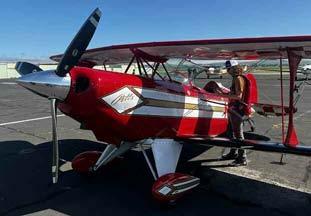
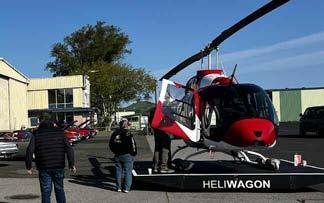
By Cynthia Wheatley Glenn
Vertical Aviation International (VAI), completed its premier of VERTICON 2025 in Dallas, on Thursday, March 13, 2025 Formally known as Helicopter Aviation International (HAI), the newly rebranded HELI-EXPO was a huge success Featuring over 686 exhibitors, including 44 aircraft from top-tier aircraft manufacturers, VERTICON 2025 brought together the global vertical aviation industry for four days of education, discussion, and connection Total attendance for VERTICON was 14,414 persons, representing 88 countries I was fortunate to be one of those attendees
“We are thrilled with the overwhelming success of VERTICON 2025,” said James Viola, president and CEO of Vertical Aviation International (VAI). “This year ’s event was an extraordinary opportunity to bring the vertical aviation community together and showcase the incredible progress being made in our rapidly evolving field Vertical flight technol-
ogy is poised to play a pivotal role in reshaping air transportation and creating more sustainable solutions for the future.”
With more than 100 different classes offered, attendees had multiple opportunities to get updates on safety issues, as well as learning what is new in the industry, innovations in technology, newly designed and presented products and aircraft, and several how-to demonstrations to make their piloting skill set broader and deeper I particularly enjoyed sitting in on LifeFlight Network’s “Reimagining the reasons for human error: A guide to learning, not blaming,” presented by Susan Gidding, Senior Advisor Patient Safety, and Jeff Kotson, Flight Operations QA Manager; “Safety Management Systems (SMS) for smallfleet or private operators,” presented by Christopher Young, Pik West Insurance Agency, LLC; and “Post-mortem accident reporting,” presented by Bruce Webb of WEBB Sight Aviation (webbsightaviation com) While Webb’s title is catchy, it wasn’t nearly as macabre as it seemed and actually explored the idea of
Proper Prior Planning Prevents Perplexing Problems in preparing for a flight.
My favorite vendor at the show was John Ramstead, who hosts a newish podcast called HangarX Studios (hangarxstudios com) He interviewed about 30 people during the conference, exploring myriad topics with movers, shakers, and innovative thinkers in the aviation industry I had the privilege of being interviewed and we discussed ways to get more women involved and up in the air flying I’ll be writing more about John and HangarX Studios in a future article
As this year ’s convention winds down, Viola will have stepped down as VAI’s CEO in late March, to take on the role of president and CEO of the General Aviation Manufacturers Association (GAMA). “Leading VAI for the past five years has been an honor and a privilege. From navigating the challenges of COVID to steering the rebrand and launching our first VERTICON, it has been an incredible journey,” Viola says “Vertical flight has been at the heart of

Robinson Helicopter Company (RHC) made a strong showing at VERTICON 2025 with two design-forward R66 helicopters as part of the refreshed R66 NxGTM The ‘next generation’ aircraft mark a significant milestone, coinciding with the 15th anniversary of the original R66, which began production in 2010 (Courtesy Robinson Helicopter)
my career since my days as a US Army aviator As my chapter at VAI ends, I am confident that this industry is climbing to new altitudes.”
VAI’s VERTICON 2026 is already set for next year in Atlanta, Georgia, USA, Mar 9–12, (with exhibits open March 10–12), and is already promising to be an even more expansive experience for helicopter and vertical aviation professionals
Sling Pilot Academy has officially expanded into Long Beach, bringing with it the “Whisper Sling” – a new pilottraining aircraft the company has designed with community concerns about general aviation noise in mind Company officials, alongside other aviation industry and city representatives, gathered at Sling’s new Long Beach Airport campus on March 5 to celebrate the expansion to unveil the Whisper Sling
Sling, founded in 2011, has four other flight training schools across Southern California, with facilities at Torrance Airport, Los Angeles International Airport, Santa Monica Airport, Gillespie Field in San Diego –and now, Long Beach Airport The company has been named the fastest-growing flight school in the nation by Inc. 5000 two years running.
The new Long Beach academy has been up and running for about a month, Sling’s co-CEO, Matt Liknaitzky, said Sling has about 50 students in training at the airport currently, he said, though the campus can train hundreds of students at a time
“We feel very grateful to be a part of everything that’s happening here in the city of Long Beach – the coolest city in the area,” Liknaitzky said “We see ourselves as the next generation in flight training; we use modern, fuel-efficient airplanes that are much quieter than traditional flight training airplanes, and our core pillars of everything we do are safety, efficiency and community ”
Speaking of community, the company also officially unveiled its new Whisper Sling aircraft at the March 5 celebration The aircraft, as the name suggests, was specifically designed by Sling to reduce noise in the hopes of being better neighbors to the communities that live around the airports where its flight schools operate.
“We attacked noise at its source, which is the engine exhaust,” Liknaitzky said, “so we’ve gone through about 20 iterations of our exhaust to muffle the sound that comes out of the engine to the maximum extent we can ”
The Whisper Sling also features a custom-made, quieter propeller, and
acoustic sound-deadening material inside the plane’s engine compartment to reduce noise.
“We spent literally 18 months on it and it cost us hundreds of thousands of dollars to do this,” Liknaitzky said “We’re doing it because we’ve heard the neighbors around the airports We realized, even though we do already have the quietest airplanes, we have to do better –because we intend to stay flying in the city (and) we want to be the best neighbor we can ”
Sling, among other general aviation aircraft operators at both Long Beach and other airports across the region, have faced mounting public pressure from adjacent communities over noise pollution. Sling’s Torrance flight school, for example, was put in jeopardy after the town declined to renew the company’s business license for 2024 The City Council did so – citing a 1977 local ordinance that, while it had never been enforced, limited the number of flight schools that could operate at its munici-
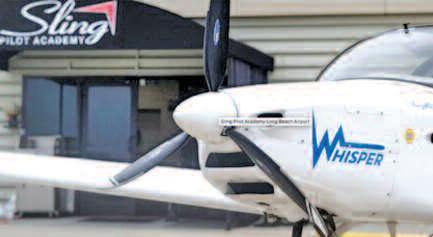
Sling Pilot Academy is now open at Long Beach Airport and features The Whisper Sling, which is 10 decibels quieter than the regular Sling training craft and even quieter than legacy general aviation aircraft (Courtesy Sling Pilot Academy)
pal airport – because of residential complaints about noise
The controversy played out for months – and eventually led to a lawsuit Sling and the city, however, settled the issue out of court in April (2024) after some legal back-and-forth. The settlement resulted in Sling’s lawsuit and a Federal Aviation Administration complaint being dismissed
“We don’t have any outstanding issues with the city,” Liknaitzky said about Torrance “It’s our biggest location, and we don’t have any plans to leave ”
Continued on Page 16






















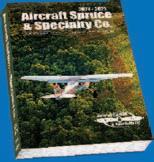



By Jim Moore AOPA
The FAA agreed with AOPA’s argument that the unleaded aviation fuels currently available are not ready to fully displace avgas in a much-anticipated March 24 decision with a clear message for all federally obligated airports
The long-awaited decision in the complaint filed under 14 CFR Part 16 (federal airport compliance regulations)




found that the 2022 prohibition on 100LL aviation fuel imposed by Santa Clara County in California violated the county’s federal grant obligations, which the county agreed to when it received, among other federal funds, approximately $6 8 million in federal airport development assistance between 1983 and 2011
The 26-page decision (with additional pages of exhibit references attached) orders the county to present a corrective action plan within 30 days, and further directs the county to include in that plan elimination of the countywide prohibition of the acquisition, storage,

and sale of 100LL fuel at the two countyrun airports, Reid-Hillview of Santa Clara County Airport, and San Martin Airport The agency also requires the county to eliminate the “prohibited exclusive right” the county created for itself by only selling Swift Fuels 94UL
In Long Beach, meanwhile, residents have long had concerns about noise pollution at that city’s airport, specifically relating to general aviation aircraft operations – including flight schools
Residential concerns about noise pollution at Long Beach Airport came to a head in September (2024) after about 100 residents asked the City Council to address the issue
After that protest at the Civic Center, the city manager ’s office released two reports detailing general aviation operations at the airport and what actions Long Beach could take to fix the issue
The reports found that general aviation – including smaller aircraft operations for any non-commercial purpose, such as flight-school training – has increased at the airport, with a notable uptick in summer 2023, as the result of a nationwide pilot shortage
In response, the city recently announced a new Fly Friendly Program (FFP) at Long Beach Airport, which is aimed at helping reduce noise pollution caused by general aviation operations by tracking flight metrics and providing incentives for pilots who abide by its rules
The FFP built upon pre-existing noise regulations under Long Beach’s local noise ordinance, which has been in place since 1995 Though it’s among the strictest of its kind in the nation, it doesn’t apply to airspace – which is under the FAA’s authority
Long Beach, though, has received FAA approval to increase fines for noise ordinance violations, a change that would require City Council approval to take effect.
Sling, meanwhile, said it’s committed to being a good neighbor and has already signed onto the Fly Friendly Program
“We are very impressed with the Long Beach Fly Friendly Program and we are signed on to it,” Liknaitzky said, “and (we are) going to try our best to be number one in Long Beach’s (FFP) ”
Left: Reid-Hillview Airport (pictured) and San Martin Airport, both in Santa Clara County, Calif , have been told by the FAA that the unleaded aviation fuels currently available are not ready to fully displace avgas in a much-anticipated March 24 decision The County has 30-days to comply by creating a plan eliminating the countywide prohibition of the acquisition, storage, and sale of 100LL fuel or to appeal the FAA’s decision (Courtesy Santa Clara County and AOPA)
and General Aviation Modifications Inc G100UL as a means to prohibit the use of
Continued on Page 18
less annoying.”
The Whisper Sling, the company said, is 10 decibels quieter than the regular Sling training craft – and even quieter than legacy general aviation aircraft
“The quality of the sound is smoother, more muted and more appealing to the human ear, which, of course, is a very subjective thing,” Liknaitzky said “But we’re very happy that we’re very close to (the sound level) of the few electric airplanes that are out there ”
The Whisper Sling also runs on unleaded fuel It also burns fewer than four gallons of gas per hour, avoiding 100 pounds of carbon dioxide emissions with each hour of flight, the company said
General aviation is also a massive contributor to both the U.S. and local economies. The industry contributed $339 billion to the U S economy and supported 1 3 million jobs nationwide in 2023, according to analysis by accounting firm PricewaterhouseCoopers



That commitment to the community, Liknaitzky said, is largely inspired by lessons learned dealing with critics of Sling operations at Torrance Airport.
“When we first started encountering people who didn’t like flight training in the beginning, we just defended ourselves,” he said “We got quite big – we were a target, so it forced us to have a lot of these conversations We decided we were leaving an opportunity on the table to make our airplanes even quieter and
“General aviation is a big part of our economy,” Liknaitzky said “But for us, the most important thing is that we provide a pathway for people to get into amazing, lucrative, well-paying careers as airline pilots ”
Several aviation industry officials –including JetZero, the Long Beach Airport Association, the FAA, the National Business Aviation Association, SkyWest, and others – attended the March 5 event to welcome Sling to “Space Beach.”
“Just in this area, we’re literally building the future of space; space stations are being built in Long Beach,” Mayor Rex Richardson said “We’re grateful for your commitment to build a vibrant community, and we’re eagerly anticipating the positive impact that you’ll have on training the next genera-




















Continued from Page 16
100LL, “favoring one class of aircraft (those that can safely use 94UL and G100UL) to the detriment of another class of aircraft (those that cannot safely use 94UL and G100UL) ”
AOPA President and CEO Darren Pleasance said, “The general aviation industry wants to move toward unleaded fuels, but the issue in Santa Clara County is that the transition was forced upon pilots and businesses before many can use it ”
The decision, which the county has 30 days to appeal, makes it clear that
grant-obligated airports across the country do not have the right to prohibit the sale or use of any FAA-authorized aviation fuel, and that ordinances such as the 100LL ban imposed by Santa Clara County can in themselves violate federal grant assurances This decision is consistent with the FAA’s 2022 letter to city officials in Santa Monica, California, stating that “an outright ban or restriction on the sale or use of 100LL would be contrary to both the Settlement Agreement and Grant Assurance 22, Economic-Non-Discrimination,” and the
■ AvailableinbothQref®Book,Cardand newiPadeditions
■ Over50yearsofprofessionalexperience ineverychecklist
■ WrittenbyMasterCFIswithworkflow andeaseofuseinmind
■ Professionaldesign,ruggedconstruction
BeechcraftBonanzaA36285HP1968-1983
BeechcraftBonanzaC/D351951-1953
BeechcraftBonanzaJ/K/M351958-1960
BeechcraftBonanzaN/P351961-1963
BeechcraftBonanzaV35A/B1966-1982
Cessna1501959-1977
Cessna1521978-1986
Cessna172UniversalUniversal Cessna172M1973-1976
Cessna172N1977-1980
Cessna172P1981-1986
Cessna172R1998-2006
Cessna172RG1980-1985
Cessna172S1998-2006
Cessna172SG10002005+
Cessna177RG1971-1978
Cessna182P1972-1976
Cessna182R1981-1986
CessnaR182SkylaneRG1978-1986
Cessna182RGTurbo1979-1986
Cessna182TAnalogGauges2001+ Cessna182T/G10002004+
Cessna210NCenturion1979-1984
CessnaTurbo182T2001+
CessnaTurbo182T/G10002006+
CessnaTurbo206H1998+
CessnaTurbo210MCenturion1977-1978
CirrusSR20AnalogGauges2000-2003
CirrusSR20G1-G22003-2007
CirrusSR20G32007+
CirrusSR20Perspective2008+
CirrusSR22G1-G22003-2007
CirrusSR22G32007+
CirrusSR22Perspective2008+
CirrusSR22G3Turbo2007+
CirrusSR22TurboPerspective2008+ DiamondDA20C11998+
DiamondStarDA402001+
PiperArcherIIPA-28-1811976-1994
PiperArcherIIIPA-28-1811995-2002
PiperArrow180PA-28R-1801967-1971
PiperArrowIIPA-28R-2001969-1976
PiperArrowIIIPA-28R-2011977+
PiperArrowIIITurboPA-28R-201T1977-1978
agency’s 2023 letter to the mayor of Superior, Colorado, stating, “a ban or restriction on the sale or use of 100LL (Avgas) at a federally obligated airport is inconsistent with Grant Assurance 22, Economic Nondiscrimination ”
Local pilots and aviation businesses affected by the fuel ban joined AOPA in filing the complaint in 2022, raising a number of safety issues created by the avgas ban, as well as alleging discrimination The county fought unsuccessfully to dismiss the complaint, a move AOPA and co-complainants opposed Santa Clara

County filed a variety of motions that sought to delay the decision, and the FAA granted itself numerous extensions to consider the matter, all of which delayed the decision by about a year
Ultimately, after reviewing dozens of motions and exhibits spanning hundreds of pages, the FAA agreed with the complainants on three of five main issues raised, dismissing two for lack of evidence (Local noncommercial operators never sought a permit to self-fuel with 100LL, and the argument that the avgas ban led to a loss of fuel flowage revenue to the airport was not sufficiently supported by evidence )










PiperArrowIVPA-28RT-2011979-1982
PiperArrowIVTurboPA-28RT-201T1979-1990
PiperCherokee140PA-28-1401964-1977
PiperCherokee150PA-28-1501961-1967
PiperCherokee160PA-28-1601961-1967
PiperCherokee180PA-28-1801963-1973
PiperDakotaPA-28-2361979-1994
PiperCherokeeLancePA-32R-3001976-1978
PiperNavajoPA-31-310B/C1972-1980
PiperNavajoChieftainPA-31-3501973-1984
PiperSaratogaSPPA-32R-3011980-1992
PiperSaratogaSPTurboPA-32R-301T1980-1987
PiperTomahawkPA-38-1121978-1982
PiperWarrior151PA-28-1511973-1977
PiperWarriorIIPA-28-1611976-1986

Based on the FAA director ’s determination in this case, there are several significant implications for airports across the nation that are subject to federal grant assurance obligations through their acceptance of federal funding:
1 Limits on fuel type restrictions: Airports cannot take exclusive control of fuel sales (exercise their “proprietary exclusive rights”) as a means to prohibit the sale, distribution, or use of FAAauthorized aviation fuels (like 100LL) This establishes that airports must allow reasonable access to all types of FAAauthorized aviation fuels
2 Exclusive rights limitations: The decision clarifies that an airport’s proprietary exclusive right to provide certain aeronautical services (like fuel sales) is limited only to those specific services the airport actually provides, and cannot be used to prohibit services the airport chooses not to provide (like selling other fuel types).
3 Nondiscrimination requirements: The determination reinforces that airports must make facilities available “on reasonable and not unjustly [discriminatory] terms to all types, kinds, and classes of aeronautical activities,” which includes accommodating aircraft that require specific fuel types for safe operation







AvidyneEntegra
GarminG1000Non-WAAS
GarminG1000
GarminG1000WAAS
GarminG600/G500
CirrusPerspectivebyGarmin
Bendix/KingKLN89
Bendix/KingKLN90B
Bendix/KingKLN94
GarminGMX200
GarminGPS400
GarminGNS430




GarminGNS480
GarminGNS530
GarminGTN750/650
GarminGXSeries
GarminMX20
Garmin300XL/250XL
AnywhereMapATC
AvMapEKPIV/IVPro
AvMapEKPV(comingsoon)
AvMapGeopilotII/IIPlus
Bendix/KingAV8OR
Bendix/KingAV8ORAce
Orderdirectorfromyourfavoritepilotsupply
GarminGPSMAP96
GarminGPSMAP195
GarminGPSMAP196
GarminGPSMAP295
GarminGPSMAP296
GarminGPSMAP396
GarminGPSMAP495
GarminGPSMAP496
GarminGPSMAP696/695
GarminAeraSeries
LowranceAirmap2000C/1000
LowranceAirmap500/600C

4 Environmental considerations balanced with obligations: While airport sponsors like Santa Clara County may have environmental concerns about leaded aviation fuel, they cannot exercise their municipal power to effectuate policies unrelated to the operation of the airport without regard to federal grant obligations that the airport sponsor is bound by in the operation of the airport.



5 Self-fueling permit requirements: While airports can implement reasonable rules and standards for self-fueling operations, these cannot be so burdensome as to effectively prevent self-fueling with specific fuel types
By Cynthia Wheatley Glenn
There is much talk and controversy right now regarding the safe use of leaded aviation fuel The following update has been reprinted with permission from flyEAGLE org:
Clearing the Air: How Unleaded Aviation Fuel Is Gaining ApprovalPart 1: Understanding the STC process and why it matters to pilots and aircraft owners
This is the first in a three-part series explaining how the next generation of unleaded aviation fuels may be authorized for use in specific engines and aircraft This installment examines the Type Certificate (TC) and Supplemental Type Certificate (STC) processes, which enable eligible aircraft and engines to operate using qualified unleaded aviation gasoline (avgas) under the FAA’s traditional certification procedures The second part will review the Fleet Authorization process, developed through the Piston Aviation Fuels Initiative (PAFI), which allows eligible aircraft and engines to operate safely using unleaded avgas The final installment will discuss the importance of industry consensus standards, such as those from ASTM International, in ensuring the safe, consistent production, distribution, and use of aviation fuels For more information on these topics, visit:
https://flyEAGLE org
Q: Why should pilots and aircraft owners be invested in the unleaded avgas approval process?
Pilots and aircraft owners play a critical role in the transition to unleaded fuels Staying informed ensures they can adopt new fuels safely and efficiently while maintaining compliance with the required approvals or authorizations
While the approval processes may seem technical, they directly affect daily operations, safety, maintenance, and long-term aircraft reliability By understanding these impacts, owners can confidently navigate the transition and make informed decisions for their aircraft and missions.
Q: What is an STC, and how is it used to authorize unleaded aviation fuel for specific aircraft and engines?
A Supplemental Type Certificate (STC) is an FAA-issued approval that authorizes the use of specific fuel, fluids, parts, and/or equipment in a designated list of aircraft and engines It is one of two pathways fuel developers can use to bring their products to market
Through the STC process, fuel developers are solely responsible for testing the compatibility, safety, and performance of a new fuel with specific aircraft and engine models Once the FAA reviews and approves the data, an STC is
Continued from Page 18
The case sends an important message that could affect how airports nationwide manage fuel availability during the ongoing transition to unleaded aviation fuels It signals that while the FAA supports the transition to unleaded aviation fuel, airports cannot unilaterally ban leaded fuel before viable alternatives are available for airport users, particularly when such prohibitions would adversely affect a portion of the general aviation fleet that still requires 100LL fuel to operate safely
“AOPA strongly supports the transition to unleaded fuels, while ensuring a continuous supply of 100LL until an acceptable alternative is available for all aircraft We will continue collecting feedback from general aviation pilots about their experience with unleaded fuels AOPA will also continue to invest to accelerate this transition Last year, we documented our findings after flying a twin-engine Beechcraft Baron – running
one engine on 100LL and the other on one of the early 100-octane unleaded alternatives – for a full year,” Pleasance added
It is unclear whether the county, having fought the Part 16 complaint for more than two years, will allow avgas to resume flowing into its own tanks at its two airports or appeal the decision Regardless, it cannot ban others from self-fueling their aircraft or offering avgas for sale on the airport A loss on appeal and refusal to comply with the FAA order to end the 100LL ban would render the county ineligible for federal airport improvement grants, which the county has not pursued since 2010 – in large part, if not entirely, because accepting these grants obligates any airport owner to comply with specific requirements The March 24 decision affirms that those obligations include not standing in the way of the sale of any approved aviation fuels
issued, authorizing the use of the fuel. The STC database can be searched to identify aircraft models approved for a specific modification or installation
The applicant can sell the STC to customers, enabling them to modify their individual aircraft for the use of the fuel specified in the STC This modification typically includes updating the fuel placard and may require additional adjustments depending on the STC For aircraft with a standard airworthiness certificate, the alteration must be performed by a certificated mechanic or authorized entity in compliance with the STC
STC data is considered proprietary to the applicant. Therefore, the FAA does not provide STC data directly to owners of aircraft with special, restricted, or experimental airworthiness certificates However, the applicant may choose to share the necessary information with interested parties Owners of Special Light Sport Aircraft (SLSA) can implement the authorization after the SLSA manufacturer issues approval Experimental aircraft owners must individually determine appropriate unleaded fuels, either by conducting their own
compatibility assessments or consulting the STC holder for relevant data
Q: What is the Approved Model List (AML)?
The AML is a list of aircraft models approved for a specific modification or installation, typically under a Supplemental Type Certificate (STC) Aircraft owners must take specific actions to implement changes to their aircraft, typically through Service Bulletins or the installation of an STC For aircraft with a standard airworthiness certificate, the alteration must be performed by a certificated mechanic or authorized entity in compliance with the TC/STC
Q: How does the STC process differ from the FAA fleet authorization process?
Under the FAA’s traditional STC/AML process, an applicant is responsible for demonstrating that the aircraft and engines meet all applicable regulations and minimum standards under the normal certification process when using the new unleaded fuel The FAA reviews the compliance data provided by the applicant and, upon approval,
Continued on Page 22

The 19th Annual California Capital Airshow, presented by Sacramento County in partnership with the City of Rancho Cordova, achieved a historic sellout, captivating over 100,000 attendees across March 22-23, 2025 This unprecedented demand culminated in a spectacular airshow headlined by the U S Navy Blue Angels flight demonstration squadron
“The enthusiasm for this year ’s Airshow was truly remarkable,” said Darcy Brewer, Executive Director of California Capital Airshow “Selling out days in advance is a testament to the incredible lineup and the unique experience we strive to deliver. This event attracts a growing number of aviation enthusiasts from all over the globe, and it is a true honor to create this event for our community ”
For the first time in California Capital Airshow history, the show completely sold out of General Admission and premium venue tickets General Admission tickets sold out in the days leading up to the event To accommodate the demand, the Airshow team secured additional parking to accommodate an extra 1,400 attendees per day These limited tickets, which also sold out rapidly, were offered exclusively to “Airshow Insiders,” subscribers of the Airshow’s email updates
“This year ’s record-breaking attendance shows how important this event is to the Sacramento region,” said Terrence McNamara, Chairman of the California Capital Airshow Board of Directors “We are deeply grateful for the unwavering support of our many volunteers, partners and sponsors, and the essential collaboration with Sacramento County and the City of Rancho Cordova ”
This year ’s airshow featured a stellar lineup of performers that left audiences in awe. Highlights included the U.S. Navy
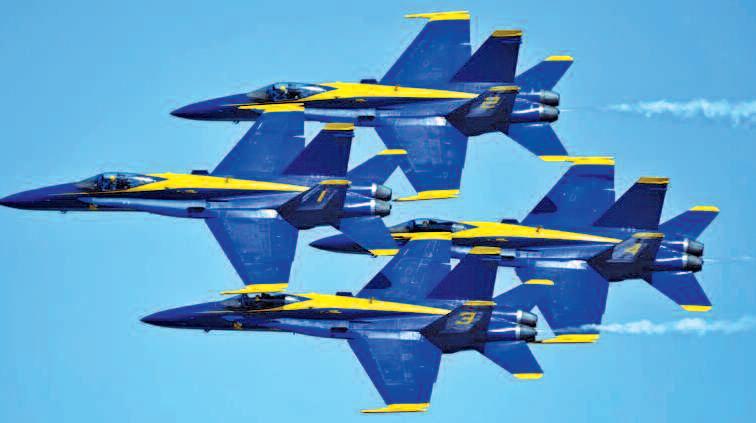
The U S Navy Blue Angels were back in Sacramento at the California Capital Airshow for only the second time since 2008, thrilling the sell-out crowd at Mather Field on March 22-23 who watched the F/A-18 Hornets fly in formation as close as 18 inches apart! (Courtesy California Capital Airshow, U S Navy Blue Angels)
Blue Angels, U S Marine Corps F-35B Lightning II, U S Air Force F-16 Viper and C-17 Globemaster III demonstration teams, Tucker ’s Air Patrol, vintage World War II aircraft and more
Set to exciting narration and music, the nonstop aerial performances ran 12-4 p m each day The diverse lineup of performers, from the cutting-edge technology of modern jets to the historical significance of vintage warbirds, ensured that this year ’s California Capital Airshow was a truly unforgettable experience
This year ’s California Capital Airshow served as a powerful tribute to the rich history of American military service and pivotal moments in global history The Aishow honored the 250th anniversaries of the Navy, Marine Corps, and Army, recognizing their enduring contributions to the nation’s defense
The aerial program featured a poignant “Warbird” tribute to the 80th anniversary of the end of World War II, highlighting both Victory in Europe and Victory in the Pacific This segment showcased iconic fighter and bomber aircraft that played crucial roles during that era, offering a moving reminder of the sacrifices and triumphs of the war.
Beyond the aerial displays, the airshow offered more than 200 acres of hands-on activities that educated and inspired As the cornerstone event of the U S Navy’s “Navy Week” in Sacramento, there were several naval aircraft and exhibits on display Attendees also explored exhibits from Travis Air Force Base, Beale Air Force Base, CAL FIRE, and various law enforcement and first responder agencies. The event showcased numerous STEM and aviation partners, providing interactive experiences for all ages
The magic of the California Capital Airshow was evident in the numbers:
• Sold-Out Success: Achieved a historic sell-out of all General Admission tickets before the event
• 146,872 Airshow spectators
• 204 acres of event space, filled with exhibits and aviation displays
• 121 vendor booths and exhibits from food purveyors, local businesses, and STEM partners
• 812 tables in the event’s premium venues
• 1,198 of electric vehicle rides at
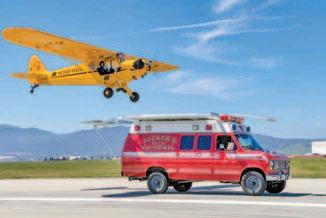
Eric Tucker ’ s current aviation adventure is a throwback to the glory days of Barnstorming Flying an aircraft built in 1941, but designed in the late 1920s, Tucker performed three distinct acts at the California Capital Airshow March 22-23 (Tyson Rininger/ Courtesy California Capital Airshow)
SMUD’s Ride & Drive exhibit
• 1,024 dedicated volunteers
• 30 partnering nonprofits
• 295 aircraft and pilots
Gratitude
Special thanks to CCA sponsors: Sacramento County, City of Rancho Cordova, Modern Aviation, SMUD, Visit Rancho Cordova, Southwest Airlines, Sutter Health, Verizon, Keurig Dr Pepper, Donaghy Sales, Monster Energy, Thunder Valley, UPS, Five Star Bank, Teichert, Atlas Disposal, Golden 1 Credit Union, Paratransit, Inc., Elite Power, Chik-fil-A and Adaptive Structures. The Airshow team also extends heartfelt thanks to its dedicated volunteers, community supporters, and the dedicated law enforcement, fire, and medical services teams who ensured a safe and enjoyable event for all
With the resounding success of this year ’s airshow, planning is already underway for 2026 The California Capital Airshow team is committed to delivering another unforgettable experience, with new performances, themes, exhibits, and activities Stay tuned for more information in the coming months
For more information about the California Capital Airshow, visit www.californiacapitalairshow.com.

We are located on the west side of KAUN.
AND Aviation Services takes pride as a family-owned and operated business providing a more personal service with the highest level of standards for aircraft owners and operators.
AND Aviation Services was created due to customer demand. Our expectation is to get you back in the air safely, quickly and on time. When you rely on AND Aviation Services for the mantenance of your aircraft, you can have peace of mind knowing that you’re working with the most trusted and experienced professionals in the business.
We pride ourselves in exceeding all FAA stadards. Combined, we have over 50 years of experience in aviation maintenance.
We are conveniently located close to Sacramento and Bay Area airports. Above the fog and belove the snow. We offer “valet” services if you want to be picked up and dropped off at your home airport.



















Last month, the American Alliance of Museums (AAM) formally granted reaccreditation to the EAA Aviation Museum, recognizing the museum’s dedication to high standards and excellence within the museum community All museums must undergo a re-accreditation review at least every 10 years to maintain accredited status
AAM accreditation brings national recognition to a museum for its commitment to excellence, accountability, high professional standards, and continued institutional improvement Developed and sustained by museum professionals for more than 50 years, the AAM museum accreditation program is the field’s primary vehicle for quality assurance, self-regulation, and public accountability. It strengthens the museum profession by promoting practices that enable leaders to make informed decisions, allocate resources wisely, and remain financially and ethically accountable to provide the best possible service to the public
Of the nation’s estimated 33,000 museums, only about 1,100 are currently accredited Accreditation is a very rigorous but highly rewarding process that examines all aspects of a museum’s operations To earn accreditation, a museum first must conduct a year of self-study, and then undergo a site visit by a team of peer reviewers AAM’s Accreditation Commission, an independent and autonomous body of museum professionals, considers the self-study and visiting committee report to determine whether a museum should receive accreditation
“Accreditation is a monumental achievement,” said Marilyn Jackson, AAM President & CEO “The process demonstrates an institution’s commitment to best practice and is flexible enough to be accomplished by museums of any size.”
EAA Aviation Museum curator Amelia Anderson led the accreditation process, which also involved numerous departments throughout EAA over the past year
ony Goes Ther T Tony oviding pr pr editedAccr eau,Bur om scheduling to dr fr


ransportation standar e T ofessional, safe, r f op of d eliable, and everything. Even mor fully ed:insur equirr e imporcially , commer ement that is
Tony Goes There Transportation sets the standard by providing a professional, safe, reliable, and enjoyable experience. As an A+ rated and Accredited business with the Better Business Bureau, you have the assurance that I will help you from scheduling to drop off – one point person for everything. Even more importantly I am fully, commercially insured: a Minnesota state legal requirement that is unfortunately not followed by other services.









Continued from Page 19
issues an STC
Under the Piston Aviation Fuels Initiative (PAFI), the FAA uses a combination of testing and analysis methods developed in collaboration with industry to determine if an unleaded avgas qualifies as a replacement for approved leaded avgas. The data obtained through testing supports the development of the ASTM production specification for the candidate fuel
The FAA will identify the makes and models of type-certificated and non-typecertificated piston aircraft and engines that can safely operate with the qualified unleaded avgas, compiling them in the Eligible Fleet Authorization Summary Report (EFASR), which will also include experimental aircraft
Additionally, the FAA will issue a Special Airworthiness Information Bulletin (SAIB) and provide detailed instructions to implement the necessary alterations for using the fuel The candidate fuel is then qualified as a replacement fuel under the fleet authorization process for the eligible portion of the fleet.
Q: Why is it important for pilots and aircraft owners to read and understand an unleaded fuel STC?
It’s crucial for pilots and aircraft owners to read and fully understand an STC, as it outlines the specific modifications, limitations, and operational
requirements necessary to safely integrate the approved fuel or equipment into their aircraft Strict adherence to the STC ensures compliance with FAA regulations while maintaining the safety, reliability, and airworthiness of the aircraft
Currently two fuels, G100UL from General Aviation Modifications, Inc. (GAMI) and Swift Fuels’ 100R have approved AML-STCs.
By understanding both pathways, pilots and owners can better plan for the transition to unleaded fuels Whether through individual STCs or fleet-wide approvals, these processes are designed to ensure safety and reliability
Part 2 of this three-part series will delve into the FAA Fleet Authorization process and its benefits for the general aviation community
Eliminate Aviation Gasoline Lead Emissions (EAGLE) is a comprehensive government-industry initiative consisting of the aviation and petroleum industries and U S government stakeholders, and a wide range of other constituents and interested parties, all working toward the transition to lead-free aviation fuels for piston-engine aircraft by the end of 2030 without compromising the safety or economic health of the general aviation industry To learn more, visit: https://flyEAGLE org

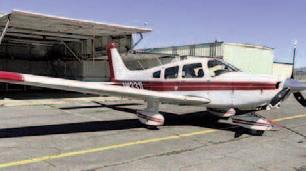
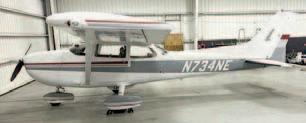


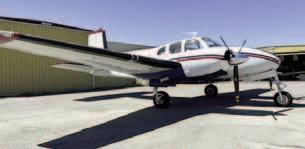
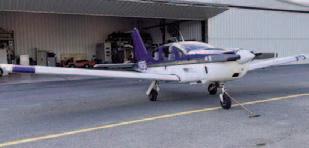

Always hangared in California since 2000. Previously hangared in Germany and Switzerland. The reliable, easy-to-fly Dakota workhorse has the "bullet-proof" Lycoming 540 engine. These engines are noted for running well beyond TBO of 2000 hours. Great useful load. Fly with full fuel and four 180+ lb. people at 160+ mph. This airplane has the power and lifting capacity to take you over the Sierras, Rockies and further. Great performance yet still fixed gear.
One-owner airplane. Has always lived in northern California. Never a commercial trainer. Low airframe and engine time. Call TJ for details.
Price reduced by 10K… Owner is desperate to sell! Great performing 160 HP airplane with 884 lbs. of useful load. Sharp interior and sporty exterior. Call T.J. for details.
INCREDIBLE PERFORMANCE! Super fast. Super high-flying in pressurized turbineengine comfort with 750 horses. What happens when you buy a jet? You have to sell your turbo-prop. Even a gorgeous one like this.
sea level to 15,000 feet in 15 minutes, land in a 25 kt crosswind. Enjoy the feel and comfort of a fine European sports car, two entry doors, fabulous visibility and superior cockpit ergonomics.
A breath-taking total restoration of a classic WWII era primary trainer. Fly solo from the front seat. An absolute hoot to fly. Comes with a spare overhauled pickled engine. Add $2,500 to price with electric start

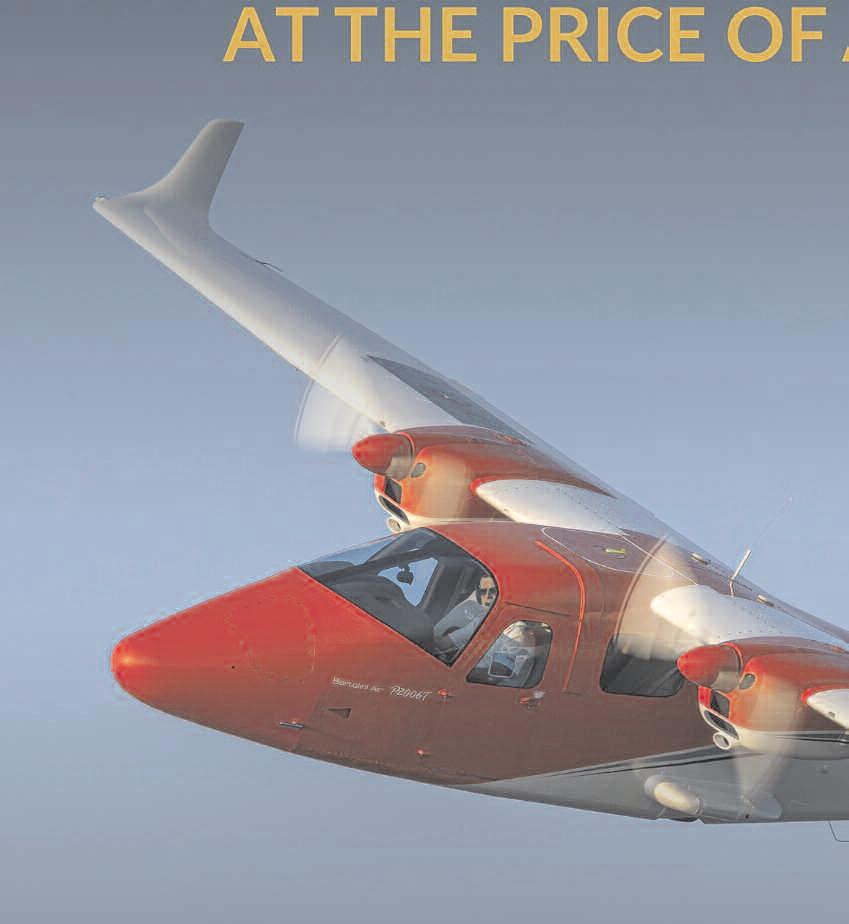


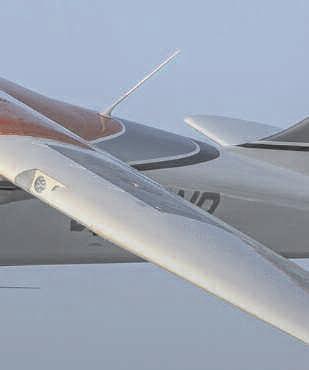







By Jay Wiles AOPA
The House Committee on Transportation & Infrastructure held a hearing March 4 focused on modernizing air traffic control equipment and hiring more controllers, while dismissing calls for privatizing ATC services
Aligning with AOPA’s longstanding objection to privatizing the ATC system, representatives from the aviation industry and members of Congress suggested that the privatization debate must be put aside to make progress on modernization and hiring
In February, a coalition of 34 aviation industry organizations, including AOPA, told members of Congress in a letter that privatization would be “a distraction from these needed investments and reforms ”
“I was pleased to see that industry stakeholders recently signaled their support for a consensus-driven approach to modernizing our ATC system backed by airlines, unions, general aviation, and many others,” Committee Chairman Rep. Sam Graves (R-Mo.) said at the hearing. “We simply cannot allow past issues that divided Congress and industry stakeholders to distract us from getting something done We must work together, and I fully intend to do just that ”
“Dating back to 1995, the Government Accountability Office (GAO) has classified the FAA’s efforts to modernize our ATC system as “highrisk ” While efforts have been made to address this deep-rooted issue since the nineties, it’s clear they’ve fallen short,” said Aviation Subcommittee Chairman Troy E Nehls (R-TX)
“I say that not to heap blame, but to make it clear that we’re not much closer to a solution than we were in 1995,” he continued. “We need to rewrite the previous playbook and begin digging out of the hole that we’ve found ourselves in. This moment in time represents a unique opportunity for the Members of this subcommittee and all aviation stakeholders to coalesce around a common goal: meaningful air traffic control modernization that will benefit the flying public and all users of the National Airspace

The House Committee on Transportation & Infrastructure held a hearing March 4 focused on modernizing air traffic control equipment and hiring more controllers They dismissed calls for privatizing ATC services
(David Tulis/AOPA)
At the request of this subcommittee, Nehls, said, GAO undertook a more recent study on the FAA’s air traffic control system Published just last year, the report noted the urgent need to modernize aging systems and found that 51 of the agency’s 138 ATC systems were “unsustainable,” or roughly 37 percent of systems; 54 of the agency’s 138 ATC systems were ‘potentially unsustainable,’ or roughly 39 percent systems; and of those 105 systems identified as ‘unsustainable’ or ‘potentially unsustainable,’ 58 have critical operational impacts on the safety and efficiency of the national airspace
“For a country that considers itself the gold standard in aviation safety, these numbers are unacceptable, and we must do better,” Nehls said
“AOPA will continue to advocate for and work toward commonsense solutions to ensure our nation continues to have the safest and most modern air traffic system in the world,” said AOPA President Darren Pleasance “Our aviation system is the gold standard in safety, and it is clear we need to invest in deploying the most modern air traffic control equipment, modernizing and consolidating our air traffic facilities, hiring and training more air traffic controllers, implementing efficiencies in the FAA’s procurement process, and redesigning airspace that causes significant delays in the system ”
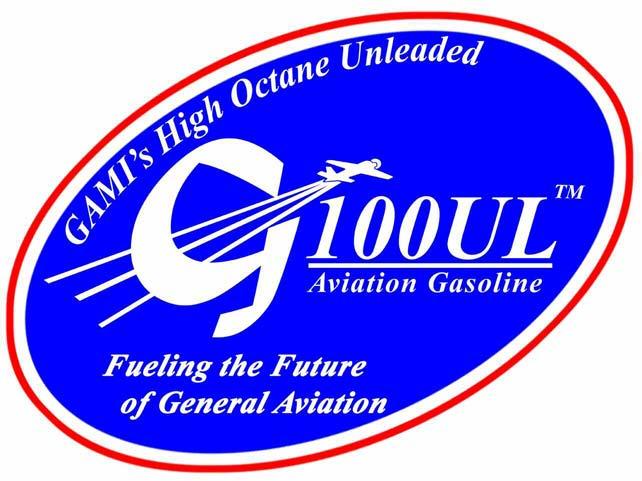




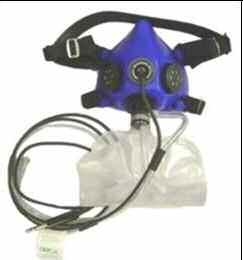
By Ed Wischmeyer
In case preparing taxes is too simple, try assembling all your medical records for your AME (Aviation Medical Examiner, i e , doctor approved by the FAA to give physicals) I needed to sort all that to get a Special Issuance third class medical after an NSTEMI heart attack (To most of us, NSTEMI means milder version, but to the FAA, it still means, you’re screwed )
To make things sound more impressive than they really were, in the past year, I’ve had five general anesthesias, three of those with intubation, and three emergency room visits (Okay, there was one event in both categories ) I’m not impressed by this track record till I tell myself that it did include eight days of hospitalizations.
I’ve been slow to realize how much psychological stress I’ve incurred from all those medical misadventures This week was my second flight since the heart attack four months ago, and second flight in the last seven months, both with a CFI along as PIC to make it legal Boy did things seem strange today, but the checklist saw me through The airplane flying and avionics went plenty good enough, but the situational awareness and multitasking were not up to snuff Then again, I didn’t sleep all that well last night and was up early Lesson learned – be careful how much flying I may attempt in a single day once I get my medical back And continue with the physical therapy to build up energy and stamina.
As I’ve noted before, IMSAFE is for real.
I’m not a fan of PT five times a week, but that’s what it will take to get me back in the air Or keep me alive, but I hope that’s still in the far distance
I’m too old to be jealous of my nephew, but still…
He came out of AFROTC in college and did well in Air Force flight training, finishing #4 in his class He didn’t get his first choices of airplane to fly, though, and had to settle for the F-22 Too bad And not that there’s any duplicity in this, but after 15 years of F-22s, he just got hired by United, flying the B737 As soon as he passes initial operating experience, he gets five years of military leave and goes back to the F-22s to finish his 20 years in the Air Force He then rejoins the airlines with five years seniority when he starts flying for them for real Sweet deal for a fine young man
So what does the B737 seem like when you’re used to the F-22? He says that for one thing, you have to trim the airplane, unlike the F-22 For another thing, the user interface on the B737 is primitive, or choose your own words, when you’re used to the highly automated F-22 Then again, Boeing – or at least major customer Southwest – wanted to retain a lot of old cockpit concepts for a common type rating across all B737s
When I got to Boeing and read the 747 pilot’s manual, and similarly when I got to Gulfstream, a lot of the mystique and glamor of flying jets went away, replaced by volumes of trivia and why on earth did they do it that way? My enthusiasm for a type rating went way down But that’s a moot point at my age.
So I’ll cheer for my nephew, loudly. I just wish his family pass privileges extended to the uncle who gave him his first airplane ride And in his first civilian job, he has good things to say about the company
Those of you who follow flight training
know that there are two paths to getting Private Pilot, Instrument, etc. One way is under FAR Part 61 which allows a student to take instruction from an individual or a flight school that has flexibility in their training The other way is under FAR Part 141 in which there is an FAA-approved tight curriculum, with the advantage that fewer hours are required to achieve a license
But there’s more to it The Part 141 curriculum is training which is limited to minimum standards, middle of the envelope Part 61 is whatever your instructor teaches you, as long as it will let you pass the check ride
When I was learning to fly, the best thing I did was ask who was the best instructor around. It was Harold Barnes, age 69, and he taught me so much more than the minimum, but better yet, instilled me with great attitudes This was before Part 141 came along, I think, but he was great
So now all the king’s horses and men are lining up against the old hands, sort of, as to what Part 141 should be Should Part 141 teach flying in the middle of the envelope, and only things that the airlines want, or teach people how to really fly the airplane – with things like chandelles and power off 180s that teach flying skills? Is it important for pilot to know more than just the middle of the envelope? Ask Captain Sullenberger who had to ditch his Airbus in the Hudson River after a dual engine failure And why license pilots fly in and even instruct in small planes if they haven’t mastered how small planes really fly, what they can and can’t do, only how to imitate airliners?
The FAA propaganda, and I do not choose that term lightly, for this initiative has many specious aspects It’s on the web with the title, “Public Engagement for the Modernization of Title 14 Code of Federal
Regulations (14 CFR) Part 141 Pilot Schools.”

Officiating this kerfuffle is the National Flight Training Alliance No, I’d never heard of them, either, and they’ve only been around for three years
NFTA is, near as I can tell, some retired UPS pilot/lobbyist who won a government contract to do this sort of thing and invented the name Frankly, I’d like to see somebody with a ton of general aviation training experience heading up this project, and that means somebody with a lot more breadth of experience than academia or multi-site flight schools
In the past, those big national flight schools and the universities pushed through requirements for flight hours that gave them a competitive advantage in flight training for prospective airline pilots.
I taught at a big name aeronautical university in Arizona for two years before I quit in disgust (I’ve heard that they’ve cleaned up their act in the intervening 20 years, hope so ) I heard a recent story about a CFI graduate of such a university who was excellent in everything she’d learned at school but had absolutely no knowledge outside of the straits of the curriculum No breadth of knowledge, none And I’ve encountered similar situations with other new CFIs, too
So is it in the national interest to have minimally trained pre-airline pilots, so that the big flight schools and universities can prosper?
The real battle, of course, is what comprises minimum standards. There are tons of young CFIs out there who meet minimum standards but are inadequately prepared for instructing And as long as their license says Airplane, Single Engine Land, that’s what they need to learn, not “gonna be an airline pilot someday so skip a lot of valuable learning ”
The Federal Aviation Administration (FAA) on March 21 highlighted the initial results from the latest air traffic controller hiring window. Five months have been shaved off the old hiring pipeline through U S Transportation Secretary Sean P Duffy’s efforts to supercharge air traffic controller hiring
Since the latest window closed March 17, the FAA has already qualified and referred more than 8,320 candidates to the aptitude exam, known as the Air Traffic
Skills Assessment (ATSA) More than 190 candidates have already passed the ATSA and moved into the hiring process.
“I’m thrilled to see that early results of air traffic controller hiring supercharge were so promising By prioritizing a merit-based process, cutting red tape, and increasing starting salaries, we are bringing in the best and brightest across America to help keep our skies secure at record speeds,” said Acting FAA Administrator Chris Rocheleau
The results are just one part of the agency’s work to prioritize the American people’s safety.
Additional Information:
Once cleared, candidates who received the highest score on the ATSA will be given priority for the Academy at the Mike Monroney Aeronautical Center
This streamlined efficiency has shaved months off the old process, helping get the best and brightest new air traffic controllers on the job much faster
The FAA has increased the starting salary for Academy trainees by 30 percent. The average certified professional controller makes over $160,000 per year.
Once trainees graduate the Academy, they’ll be assigned to one of the 313 FAA facilities across the country, where they’ll work with experienced air traffic controllers toward their certification
For more information, visit the FAA website, faa gov or directly for ATC hiring, https://www faa gov/atc-hiring







Whirly-Girls International, a non-profit, educational, and charitable organization dedicated to advancing women in the helicopter aviation industry, has announced the recipients of the 2025 Whirly-Girls Scholarship Awards
The scholarships were awarded at the Whirly-Girls Annual Gala during VERTICON in Dallas, Texas The largest scholarship program in the helicopter industry is made possible with the support of aviation leaders and 46 scholarships were presented to deserving female aviators and maintainers
Recipients of the 2025 Whirly-Girls scholarships are:
• Kimberly Gilpin - Whirly-Girls Memorial Flight Training Scholarship
• Emily O’Hara - Whirly-Girls Initial/Add-on Flight Training Scholarship
• Marjolein Pawlus - Whirly-Girls Jean Tinsley Memorial VERTICON Scholarship
• Erin Walling, Caira Zupo & Kimberlee Coombs – 3G Getting Started with Helicopters Scholarship
• Lena Maier & Munanie Mbatha –Airbus/Helisim LLC AS350 Scenario Based Training Scholarship
• Corrina Gardner & Rachael Leeson- Anastasia Mosquito Control District Ag Spray Scholarship
• Ortega Faith - Bell 407 Field Maintenance Scholarship
• Michelle Acosta - Bell 407 Series
Integrated Avionics System Maintenance Scholarship
• Karen Prevette - Bell 412 Series Field Maintenance Scholarship
• Kaela Robertson - Bell 429 Field Maintenance Scholarship
• Ortega Faith - Bell 429 Integrated Avionics System Maintenance Scholarship
• Marie Jouan - Bell 505 B1 3 Field Maintenance Scholarship
• Marie Jouan - Bell 505 B2 Integrated Avionics System Maintenance Scholarship
• Shauna Wild - Stewart “Stu” Dietrick Memorial Scholarship
• Sara Lower - Bristow Group Initial Helicopter Flight Training Scholarship
• Maria Paradise - CAE SK-76
Initial Training for Helicopter ATP Scholarship
• Ionna Athanasiou – Coptersafety H145 Initial/ATP Training Course
Scholarship
• Justine Nobbe - Edward M Thurn Memorial Scholarship
•Kiley Taber - Flight Safety International Bell 206/Bell 407 Scholarship
• Maria Romero-Abella, Michelle Astergard & Karina GaynutdinovaGarmin GTN & Flight Display Pilot Training Course Scholarship
• Kasia Hayden & Lauren HutsonGarmin Aviation Online Training Course Scholarship
• Katherine Bryson - Leading Edge Flight Academy & Central Oregon Community College Helicopter Instrument Rating Scholarship
• Jena Kendall & Ivona RedlinskaLeonardo Helicopters AW139 Flight Training Course Scholarship
• Anna Harpila, Andrea McGivray & Erin Kinsella - Leonardo Helicopters AW139 Full Airframe Maintenance Course Scholarship
• Melissa Edsel - Lora Trout Remembrance Initial or Commercial Training Scholarship
• Alexandra Ambros - MD Helicopters MD500 Flight Training

Forty-six scholarships are being presented this year to deserving female aviators and maintainers (Courtesy Whirly Girls)
Scholarship
• Izabele Bellini, Munanie Mbatha & Joanna Forrester - Oregon Aero CRM/AMRM Instructor Training Scholarship
• Holly Henderson & Mandoly Leader - PHI Aviation Bell 407 Scholarship
• Melissa Leggett - Robinson Helicopters R22/R44 Safety Course Scholarship
• Casey Campbell - Robinson Helicopters R66 Safety Course Scholarship
• Shelbi Enzenauer-Sereni & Amory Harris - Survival Systems USA
Continued on Page 34








Freedom Center 300 County Airport Rd. Ste. C4 Vacaville, CA 95688 Phone: (707) 449-3402
The Rowland Freedom Center is open every day*, from 10:00 AM – 4:00 PM, featuring a variety of aviation and military displays, honoring those who defend our freedom.
he Ro T y*, fr da variet honorin to excessi tioning)
reedom ev wland F AM – 4:00 P rom 10:00 viation displa ty of a ho defend o ng those w e heat n v o y close o ), ma ery r is open ev PM, ys, tary our freedom. no air condiys. on certain da
*Due to excessive heat (and no air conditioning), we may close early on certain days.
Suggest er 6 Ov om
t Rd. Ste. C4 ted e D Activ Kids 4-17 ree 5 F on –Veterans, y, p y Vacaville (707 A 95688 e, C 7)
Suggested Admission Donation – Adults 1864 $5, Kids 4-17 $3, Active Duty, Veterans, Over 65 and Under 3 Free

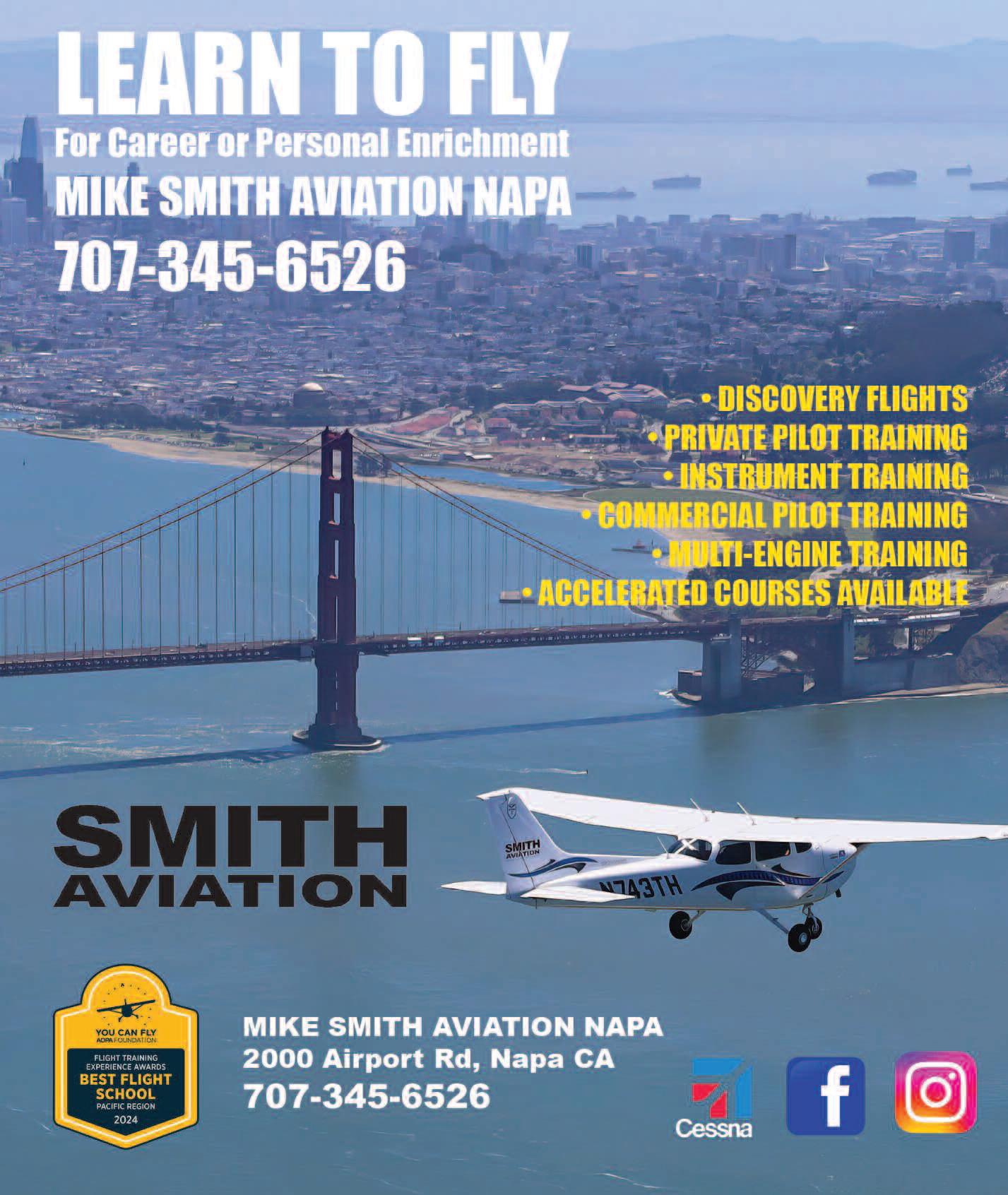

One of the truly great things about being an aviation buff is the number of “Goodies and Gadgets” available to play with. Here In Flight USA has collected a few new ones worthy of your consideration.
Aircraft Spruce & Specialty Co has been the supplier that aircraft builders, owners, pilots, and aviation businesses have depended on since 1965 They carry a wide selection of aircraft parts, building materials, avionics, and pilot supplies, all of which are offered on their website (www aircraftspruce com) and in the famous Aircraft Spruce catalog, now over 1,000-pages available for download or for free in print You can depend on Aircraft Spruce for prompt shipping and competitive pricing on all orders
ICYMI (In Case You Missed It) the folks at Aircraft Spruce have been very busy this first quarter of 2025 In February, they opened a warehouse in Melbourne, Australia, highlighted by a Grand Opening event on Feb 1, 2025, where more than 300 people attended On March 8, they opened a new location in Roanoke, Texas while celebrating their 60th anniversary in business from what started in a home garage three generations ago has scaled into now nine warehouse locations; seven here in the states and one each in Canada and Australia Couple all that with booths at airshow events, including Sun ‘n Fun this month, and prepping for AirVenture this summer, the Aircraft Spruce team is fired up with discounts at the shows and dedication at their warehouse stores
Aircraft Spruce is the supplier that aircraft builders, owners, pilots, and aviation businesses have depended on since 1965 They carry a wide selection of aircraft parts, building materials, avionics, and pilot supplies, all of which are offered on their website, aircraftspruce com, and in their famous 1,000plus page Aircraft Spruce catalog, available online and in print for free. Call 1877-477-7823 to order.
The IceBox is a portable air conditioning system, for your car, boat or airplane
For Pilots:

No more flying in a scorching hot cabin! Turn on the IceBox during preflight and cool your cabin down before engine start. Jump in and experience a comfortable taxi and departure to a cooler altitude Enjoy hours of IceBox cooling power and control your comfort with the wireless remote control
For General Use: Use the IceBox portable air conditioner in any environment, with or without available electrical power Cool down the car or boat with
the IceBox, and keep your engines off in the process
Note: Icebox Full system includes: Icebox Wireless Model 12V/24V, Pilot Cable, Aux Battery, Exhaust Air Hose, and Wireless Remote Control Select a 12V or 24V unit in a full system kit or wireless kit with prices staring at $425 (check the webiste, aircraftspruce com for additional pricing on the units)
The Private Pilot Kit is an all-in-one

program designed to expedite training for the Private Pilot certificate This kit contains what you need (except airplane and instructor!) to become a Private Pilot
Gleim guarantees you will pass your FAA Knowledge Test by using their interactive Online Ground School You’ll become a better test-taker with unlimited practice sessions and you can study anywhere using Gleim Test Prep Online.
The kit includes the following: Flight Bag, Gleim Cap, Flight Computer, FAR/AIM (Card access for downloadno physical copy), FAA Test Prep Online-Private Pilot, Logbook, Pilot Handbook, Plotter, Private Pilot Flight Maneuvers and Practical Test Prep, Private Pilot FAA Knowledge Test book, Private Pilot Syllabus book and Private Pilot Training Record book The kit sells for $189 Check the Aircraft Spruce website for additional Gleim products, including the Deluxe Private Pilot Kit that sell for $239
Odie’s Universal Oil (OUO) is a revolutionary true hardwax oil finish that was originally developed for wood but is so versatile it can be used on almost anything! Food safe, sol-

vent free and non-toxic, containing no added driers, heavy metals or part 2 catalyst
Odie’s Universal Oil protects, stabilizes, beautifies, waterproofs and enhances any surface easily, safely and naturally Provides a lustrous sheen in one coat! OUO is clear curing and nonyellowing while containing natural UV inhibitors, helping to protect from the sun’s harmful radiation. OUO penetrates, cross links and bonds molecularly, becoming one with any surface it’s applied to and does not sit on top as a shell or film like many conventional finishes It cures fast and hard while also remaining flexible This means it will never peel, flake, chip, delaminate, wrinkle or leave unsightly white scratch marks or cracks! Odie’s Universal Oil will actually get better with age, becoming more durable and more beautiful!
Odie’s Universal Oil can be applied to everything from wood, metal, leather, rubber and concrete to plastic, vinyl, stone and more!
Odie’s Oil comes in two sizes The 9-ounce jar sells for $58 95 and the 32ounce jar sells for $194.25. Note, the manufacturer says a little goes a long way!
comfort over long flights It upholds the acclaimed noise cancellation of the Bose A20 but features a lower overall weight and 20 percent reduced clamping force
Audio on your terms The A30 features the best balance of attenuation and audio clarity of any pilot headset on the market Its optional Bluetooth® interface and three selectable modes of active noise cancellation with talk-through communication provide industry-leading communication across all types of aircraft.
Designed to perform With a sleek, modern design and a toolless side swappable mic, the A30 is engineered to provide versatility and a new level of performance in nearly every cockpit environment Additionally, the headset is made with materials chosen for strength and durability without the bulk and clamping force of typical aviation headsets
Promotion Now through May 3, 2025 Get free Bose QuietComfort Earbuds (Black) (a $179 value) when you purchase an A30 or ProFlight2 headset, plus 10 percent off a second and subsequent headset purchased on the same invoice. Maximum of one set of earbuds per invoice. Volume sale discount must be on the same invoice to qualify. Selection from two versions: with or without Bluetooth and for various plug/cord options Each unit sells for $1,299

Quiet the noise. Amplify the experience. What happens when all the distractions – everything that’s standing in your way –are stripped away? You’re left with the pure, indescribable feeling of the freedom of flight
Breathtaking comfort. Showstopping quiet. The Bose A30 is the highestperforming, most comfortable aroundear aviation headset for pilots we have ever created It dramatically elevates every flight with the best combination of comfort, audio clarity, and active noise cancellation on the market
Setting the bar for long term comfort The A30’s lightweight design with low clamping force provides unparalleled
Look for Aircraft Spruce at the following events:
• April 1-6, 2025 – Sun ‘n Fun, Lakeland, Flor , Booths Hangar B, booths 109
• April 9-12, 2025 – AERO Friedrichshafen, Meckenbeuren, Germany, booth A4-102
• May 3-4, 2025 – Great Alaska Aviation Gathering, Palmer, AK, Raven Hall Booths 74 and 75.
• July 21-27, 2025 – EAA AirVenture, Oshkosh, WI, Hangar A, Booths 10221029

Inspiring speakers emphasizing the value of pursuing excellence, teamwork and perseverance opened the NBAA 2025 Schedulers & Dispatchers Conference (SDC2025) in New Orleans on March 25, amid the festive fanfare of a traditional, second-line brass band
The theme of the three-day conference (March 25-27), which included education sessions, product and services exhibitors and networking opportunities, was “Let the good times fly, navigating tomorrow, today ” The phrase offers a reminder about the importance of achieving excellence in a world where the pace of change is accelerating, offering new opportunities and ways of thinking
NBAA President and CEO Ed Bolen praised attendees at the 36th annual event

NBAA President and CEO addressed attendees at the organization’s 2025 Schedulers & Dispatchers Conference (SDC2025) in New Orleans on March 25 (Courtesy NBAA)
–¬ as well as the overall scheduler and dispatcher profession – for consistently focusing on their best professional selves, while helping each other along the way
“This week, as we’re all together and
we’re focusing on letting the good times fly, navigating tomorrow today, we know that the best way for us to promote and foster an environment that allows business aviation to thrive, attract, develop and retain the next-generation workforce, and bring to market exciting new technologies is we’ve got to work together,” Bolen said “We’ve got to be safe We’ve got to learn from each other We’ve got to communicate, coordinate, collaborate We’ve got to be a community ”
As the keynote kicked off, NBAA Schedulers & Dispatchers Committee CoChair Jennifer Dow said “navigating tomorrow today” also refers to the necessity to look ahead and confront new challenges “We know that the aviation industry is changing rapidly,” she said “New
technologies, evolving safety standards in an always-demanding global market are pushing us to innovate faster than ever.”
Other factors surrounding sustainability and geopolitics also impact flight operations and the movement of people, noted Co-Chair Andrew Stylianou “These challenges affect us all, but I firmly believe that it is the schedulers and dispatchers on the front line who will lead the charge ”
Although aviation remains the safest mode of transportation, the conference comes after several recent, tragic accidents and incidents that have sparked questions and concerns
“We know the overall accident trends have been going down,” said Bolen “We
Continued on Page 34
The long-awaited return of the iconic Pacific Coast Dream Machines Show is officially here The “Coolest Show on Earth” is set to make a spectacular comeback on Sunday, April 27, 2025, from 10 a m to 4 p m at Eddie Andreini Field, Half Moon Bay Airport, just south of San Francisco
For over three decades, this remarkable celebration of mechanical ingenuity, power, and style has captivated audiences from around the world Now under the visionary leadership of Kevin Palmer and Frank Besnyi, the newly appointed chairs of the organizing committee, the show promises to uphold its rich traditions while introducing exciting new elements to delight enthusiasts of all ages.
Set against the scenic backdrop of the Half Moon Bay coastline, the Pacific Coast Dream Machines Show will feature an awe-inspiring display of more than 2,000 extraordinary vehicles Attendees can look forward to a mesmerizing array of antique, vintage, classic, custom, and exotic cars alongside a thrilling lineup of planes, helicopters, motorcycles, and other unique mechanical creations Whether you’re a car collector, aviation enthusiast, or simply a fan of all things mechanical, this event is not to be missed.
Beyond the jaw-dropping machines, the show offers a full day of family-friendly entertainment Highlights include:
• Greasemonkey Kids Fun Zone: Action-packed amusements designed to keep young gearheads entertained
• Live Music All Day: Groove to an

The legendary P-51 Mustang is an American single-seat fighter that soared to fame during World War II Celebrated for its speed, range, and firepower, it was a vital asset in winning air superiority Whether you ’ re an avid historian or casual fan, you’ll love seeing this iconic warbird up close at the Pacific Coast Dream Machines show (Courtesy Pacific Coast Dream Machines)
eclectic mix of live performances from talented local bands
• Delicious Food and Drink: Indulge in a wide selection of culinary delights, including craft beer and premium wine
All Day – Mesmerizing Displays of Magnificent Machines: The World’s Coolest Cars, Trucks, Motorcycles, Exceptional Vintage Warbirds, Classics from the 40’s and 50’s, Sport, Ultralight and Homebuilt Aircraft, Antique Tractors and Engines, Buses, Antique and Classic Boats, Fire Engines, Military and Law Enforcement Specialty Vehicles, Super Sleek Streamliners, Nostalgia Dragsters, Bicycles, Next-Gen and Green Technology Vehicles, Kinetic Art, Rolling Sculptures, Extreme Toys, MegaModified Machines, Uni-Motorcycle Drag Racing Display/Demo, UltraThrilling Helicopter Rides, Military Vehicles You Name It, We Got It!
Thrilling Grease Monkeys Kids
Funzone activities, Face Painting, Body Art, Glitter Tattoos, Kids’ Amusements, Plus Fabulous Food Trucks and Booths, Plus Premium Craft Beer and Wine in the Food & Music Court
6:30 a.m. – 9 p.m – Show Car and Display Machines Arrival
10 a.m. – 4 p.m – The Coolest Show on Earth Officially Opens –Spectator Gates Open
10 a.m. – 10:10 p.m – Bob Senz’ Big Crazy Cacklefest – A Mass Synchronized Firing-up of the Engines of All the Motorized Mechanical Marvels to Honor Show Founder and Chairman Emeritus, Bob Senz
10 a.m. – Music on the Runnin’ Down a Dream Music Stage
11:30 a.m. – 1:30 p.m. – Music on the Runnin’ Down a Dream Music Stage: Bill Kirchen Best known for his iconic work on “Hot Rod Lincoln” with Commander Cody and his Lost Planet Airmen, Kirchen’s legendary kicks and storytelling charm make every show unforgettable
12 p.m. – 12:10 p.m. – Bob Senz’
Big Crazy Cacklefest – A Mass Synchronized Firing-up of the Engines of All the Motorized Mechanical Marvels to Honor Show Founder and Chairman Emeritus, Bob Senz
2 p.m.– 2:10 p.m. ~ Bob Senz’ Big Crazy Cacklefest – A Mass Synchronized Firing-up of the Engines of All the Motorized Mechanical Marvels to Honor Show Founder and Chairman Emeritus, Bob Senz
2 p.m. ~ Music on the Runnin’ Down a Dream Music Stage: Anthony Paul Soul Orchestra Fresh off three Blues Music Award nominations, including Band of the Year, ASPO brings deep grooves and electrifying energy to every stage.
Spectator admission pricing is as follows:
• $35 advance purchase ($40 at the gate) for ages 18-64
• $20 advance purchase ($25 at the gate) for ages 11-17 and 65+
• Free admission for kids age 10 and under
• Tickets and registration are now available on the event’s website: https://www pacificcoastdreammachines com/tickets
Proceeds from the event will benefit the Coastside Adult Day Health Center in Half Moon Bay, supporting their vital work in providing health services and enriching programs for local seniors and adults with disabilities.
Learn more at the Pacific Coast Dream Machines website, www pacific coastdreammachines com Also on social media at Facebook: facebook com/ pages/Pacific-Coast-Dream-MachinesShow or Instagram: instagram com /dreammachinesshow/
James A Viola on March 20 officially assumed the role of president and CEO of the General Aviation Manufacturers Association (GAMA). Viola is GAMA’s sixth president and CEO since its founding, 55 years ago, in 1970
“It is a privilege and an honor to be able to lead such an impactful global organization that is known for the great work it does on behalf of the general aviation industry,” James Viola said “I look forward to working with our membership to continue to advocate for policies and regulations that allow for the industry to grow, flourish and advance innovation
While this is an exciting time for our industry there is still a lot of work to be done to meet new and ongoing challenges It is important that we continue to illustrate the robust opportunities and economic and societal benefits that our
industry provides around the world
Under my leadership, I plan for GAMA to provide valuable thought leadership and continue to be a commanding and astute voice for the good of its membership and the entire industry ”
Viola comes to GAMA from Vertical Aviation International (VAI), where he served as president and CEO since 2020 Viola led VAI in representing and supporting the interests of the global helicopter industry and other vertical aviation stakeholders Additionally, Viola spearheaded the association’s rebranding from Helicopter Association International (HAI) to VAI, which widened the association’s focus to encompass the rapid expansion and technological evolution occurring in vertical aviation
Prior to VAI, Viola spent over a decade at the U.S. Federal Aviation
Administration (FAA) His last role at the agency was Director of General Aviation Safety Assurance, where he was responsible for maintaining consistency and standardization in the application of safety oversight activities for the general aviation community Additionally, Viola spent over two decades as a U S Army aviator, achieving the rank of Colonel In addition to his more than 35 years of aviation experience, Viola holds several Master ’s degrees, including one in Strategic Studies from the U S Army War College in Carlisle, Pennsylvania, and one in International Relations from Auburn University in Montgomery, Alabama Viola is an Airline Transport Pilot (ATP) and Certified Flight Instructor (CFI) for helicopters and airplanes and has accumulated more than 8,000 flight hours, including 1,100 with night-vision goggles.
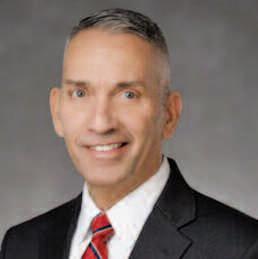
(Courtesy
The Federal Aviation Administration (FAA) is taking immediate action on key safety issues identified during a March 6, 2025 General and Business Aviation Call to Action meeting
The agency will communicate reminders to pilots through various outlets the importance of:
• Checking Notices to Airmen (NOTAMs) for situations they can encounter during flight, including Temporary Flight Restrictions.
• Being familiar with their destination airport by reviewing aeronautical charts, Arrival Alert Notices and the FAA’s From the Flight Deck video series
• Avoiding complacency by paying close attention to pre-flight checklists
• Always paying attention to onboard collision warnings even if the pilots don’t think an actual conflict will occur
The FAA also will:
• Initiate a safety-risk analysis of close encounters between pilots flying visually and pilots flying under air traffic control
• Increase FAA Safety Team (FAASTeam) outreach on radio communication phraseology, NOTAMs and operations in and around highly controlled Class B airspace.
• Continue to work with Part 135 and air tour operators to implement mandato-
ry Safety Management Systems (SMS) to meet the implementation dates in Part 5
• Explore additional tools for pilots to assess operational risk and their own performance
Additionally, starting at a General Aviation Joint Safety Committee meeting in early March, the FAA will collaborate with industry groups to discuss additional safety actions raised during the Call to Action to develop a plan that can make general aviation and business aviation safer.
“Safety is a collective effort that requires constant, proactive collaboration among all stakeholders,” said Acting FAA Administrator Chris Rocheleau “Complacency is the enemy of safety and we need to be vigilant to address emerging risks before they become problems ”
The FAA held the Call to Action to identify concrete steps to address recent safety incidents and make general and business aviation safer More than two dozen FAA, industry and labor leaders attended the event at the agency’s headquarters building Sessions addressed three topics Ideas that emerged included:
(where pilots flying visually and pilots flying under air traffic control operate in the same airspace)
• Examine methods to allow VFR aircraft to safely fly near and through highly controlled Class B airspace
• Continue the installation of aircrafttracking technology in control towers
• VFR pilots could broadcast a specific code on their transponders and monitor a specific radio frequency around airports with a mix of VFR and IFR traffic This helps air traffic controllers to keep these types of operations safely away from each other.
(the gradual deviation from established safety procedures and best practices)
• A common thread in aviation accidents is Acceptance, Boredom and Complacency (ABC) Emphasize paying attention to details, especially use of checklists
• The incorporation of scenariobased training could add to GA pilots’ training
• Artificial Intelligence (AI) could play a role helping a pilot conduct a risk assessment before flying.
• Safety management is a formalized
decision-making process that prioritizes safety
• Safety management can be scalable to all types of aviation operations
• Safety management occurs within individual operations and across industry segments
• Continued work with stakeholders to implement SMS to address and reduce risk in their operations and the National Airspace System is important for all of industry.
The March 6 Call to Action will kick-start even greater safety collaboration between the FAA and general and business aviation communities It will build on existing partnerships such as the GAJSC and the Aviation Safety Information Analysis and Sharing (ASIAS) database
Session moderators included senior FAA leaders and Ed Bolen, president and CEO of the National Business Aviation Association (NBAA); Sean Elliott, vice president of Advocacy and Safety for the Experimental Aircraft Association (EAA); and Jenny Ann Urban, managing director of Air Charter and Maintenance for the National Air Transportation Association (NATA).
Learn more at faa gov
Continued from Page 32
know the number of fatal accidents has been going down. But we also know it’s not enough to be safe; we’ve got to be perceived to be safe. And being safe isn’t a destination – it’s a journey that we are on, with the destination being perfection What we do requires constant vigilance, constant communication, constant collaboration, constant support ”








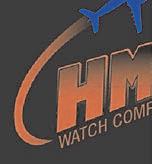

Headlining the keynote with a message of encouragement and inspiration was seven-time Olympic medalist Shannon Miller, who gained fame as a member of the “Magnificent Seven” U.S. gymnatics team that won gold at the 1996 Olympics in Atlanta
Left: Seven-time Olympic medalist Shannon Miller won a standing ovation after inspiring attendees with her keynote address at SCD2025 (Courtesy NBAA)
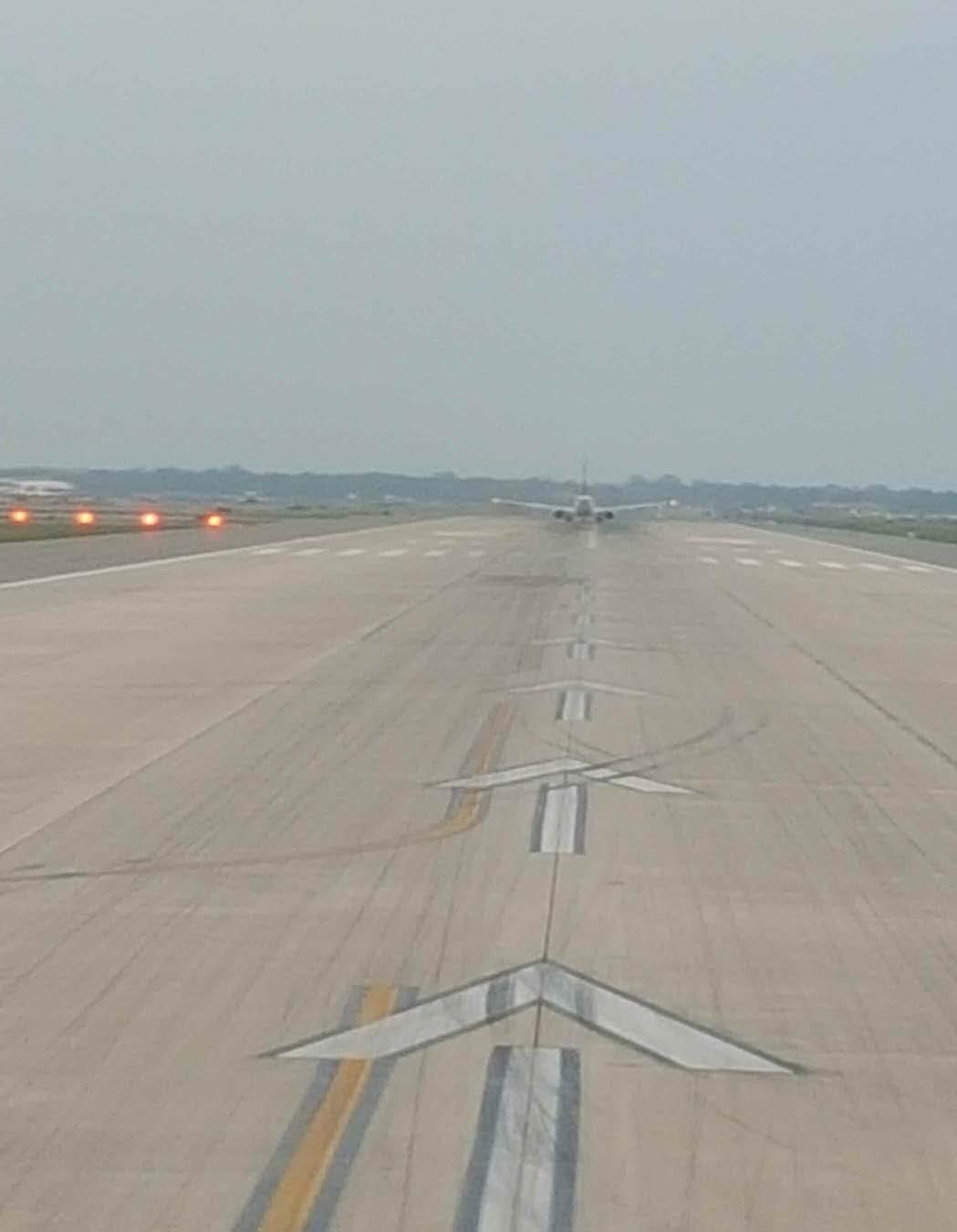
“When you talk about navigating tomorrow today, what we have to realize is that tomorrow is already here,” Miller said. “Greatness starts with, ‘What did I do today to further those goals?’”
Miller acknowledged that at some point everyone hits a proverbial wall “There will always be a reason why we cannot succeed,” said Miller “But our job every single day is to find all of those reasons why we will succeed Cling to those I built my career on this belief that often, success goes to those who simply refuse to give up ”







HMEWatch is offering excellent prices on their long established Professional Flight Watch line.
They are offering an excellent clearance sale to make room on new models coming out later this year. Take advantage of these high-quality models while they last at really great pricing.
There are a number of different models and colors offering both, Metal Bracelet models starting at a low $139.95, as well as high-quality Rubber/Neoprene bands at only $119.95.
The ATP model is an all digital multi-function watch offering multiple alarms, stopwatch, as well as countdown time, multiple city “World-Time” covering every time zone on the planet, and a thermometer, as well as an altimeter/barometer. These popular full-featured models are newly priced, starting at $74.95!
There are four versions of the “ATP,” a larger all black plastic with either a regular LCD display or a reverse LCD display; the other, slightly smaller, offers a metal case and yellow rubber strap.
The HMEWatch A.T.C. (Aviator Timepiece-Chrono) Aviator watch is an all analog, high-quality aviator watch offered in multiple styles. This model features a 60- minute chronograph, date window and a second-hour indicator to show a constant display of a second time zone whether it be your home, destination or as most use it, G.M.T./Zulu Time. This second large hand is a 12hour hand teaming up with a 24-hour Subdial indicator.
There is also a simple, optional instant-reset for the Chrono, where an instant push of the lower right mode button resets the chrono; no more having to stop the chrono before resetting it if that is your wish. In addition, there is also a functional E6B calculator Bezel on each model.
The A.T.C. comes in either all-stainless with a stainless steel bracelet or a stainless steel body with a polyurethane strap. HME Watch offers all models, including the P.U. strap model with a deploy clasp instead of the lower price “Tang-Buckle” found on most watches. In keeping up with styles today, this is a fairly large watch, at 43mm diameter by 13mm thick. Weight is about normal for a stainless steel model.
Take advantage of these special prices while stock lasts. Also, they are offering prices well under retail on Citizen Eco-Drive Pilot watch models. Contact HME at 323-464-6660 or go to www.hmewatch.com












Miller has also survived cancer, after being diagnosed in 2011 While searching for a way to navigate her recovery, she reached out for help from others – a life lesson she continues to share “Having a positive attitude is a choice and we make it
Continued on Page 36
Continued from Page 28
“I’m so proud of our Whirly Girl Scholarship program which continues to attract and inspire many women; some are just beginning their journey, and some have many years of experience in need of advancing their career Every year, with the help of our amazing sponsors and board members, we’ve been able to add new scholarships and value to the program. The caliber of women applying to these scholarships is impressive and it’s very satisfying to see the long-term effects on the growth of female helicopter pilots and maintainers I can personally attest to the impact the Whirly-Girls scholarships and community has and meeting other women in the field going through the same experience is amazing I hope to continue to support the organization’s impact on others, in fact, I talk about it so often, now the guys at work know my spiel and are helping me to promote it too! It’s great to feel the love industry-wide ” said Annie Paya, WhirlyGirls International Scholarship Director
The Whirly-Girls Scholarship Fund, Inc. (“WGSF”) was incorporated to oversee and administer the scholarship funds raised by the Whirly-Girls and their Associates Initiated in 1968, the scholarship program has grown from a single $500 scholarship to a wide range of training and development scholarships valued today at $600,000
For more information on Whirly-Girls International, visit www whirlygirls org
The 2025 Clear Lake Splash In will bring together seaplane enthusiasts, pilots, and industry professionals for a weekend of demonstrations, education, and networking on April 25-27 at the Skylark Shores Resort in Lakeport, California
“This year ’s Splash In offers exceptional opportunities for seaplane pilots and businesses to connect, learn about the latest innovations, and help shape the future of seaplane access in Northern California,” said Herb Lingl, Education Director of the Clear Lake Flying Club and Splash In Coordinator
The event will feature discussions on seaplane infrastructure options for Lakeport and other portions of Clear Lake. Leading seaplane base developers Bellingham Marine, Bluewater Marine, and Seaflex will present proposals for the construction of a possible seaplane dock in central Lakeport
The three-day event highlights cutting-edge developments in seaplane technology including presentations by:
• Bruce Bolla, retired United Airlines pilot and Gold Seal flight instructor who will present on the innovative Vickers
Wave amphibious aircraft and
• Frankie Ridolfi, experienced Super Petrel pilot and president of the Oakland Experimental Aircraft Association Chapter who will discuss the Super Petrel XP
The popular “Which Seaplane Is Right For You?” seminar series will feature presentations about the Republic RC-3 Seabee and the Grumman G-44 Widgeon
Special sessions include:
• Presentations about adventure flying in Alaska by Chris Brown of Centurion Flight Services and in Montana by Terry Hayes, an exceptionally accomplished seaplane pilot and gold seal certified flight instructor
• An exciting showcase of “The Horizon’s Calls” (horizoncalls.com), a forthcoming book documenting the remarkable cross-country journey across the USA in a straight float seaplane and
• Two safety seminars qualifying for FAA WINGS Pilot Proficiency Program credit, presented by Dr Stephen Bateman and Tod Dickey, Arizona Regional Director of the Seaplane Pilots Association
The Splash In will host a welcome
dinner for pilots and friends on Friday at the Lakeport residence of Tom and Ruth Lincoln Saturday’s dinner at the Lakeport Yacht Club will include special video screenings of seaplane-related material, including an exclusive production created for the Splash In by Aero Club Como, the world’s oldest seaplane club based in Italy
Educational highlights include presentations about the AOPA High School STEM Aviation Program and the Clear Lake Flying Club Youth Program
Seaplane parking on the Skylark Shores Resort grounds and dock spaces at the resort are limited and allocated on a first-registered basis. Free shuttle services will be available for pilots flying into Lampson Field Airport (1O2).
For complete event details, the full schedule, and to register, visit clearlakesplashin com
The Clear Lake Splash In brings together seaplane pilots, enthusiasts, and industry professionals for a weekend of
on April 25-27
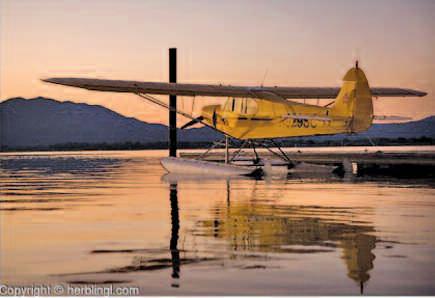
A Piper, Cub Crafters Super Cub, on floats at dawn, docked at the Skylark Shores Resort dock, during a past Clear Lake Seaplane Splash-In, at Lakeport, in Lake County, California
(Courtesy Herb Lingl)
education, networking, and celebration of the seaplane community. The event is hosted by the Skylark Shores Resort and Clear Lake Flying Club It takes place in California’s beautiful Lake County; there is no shortage of other activities to enjoy while visiting For more information about the area, visit https://lakecounty com/
The Clear Lake Flying Club successfully concluded its “Introduction to Aviation” series for Lake County youth this past Saturday, March 22, at Lampson Field Airport (1O2) in Lakeport, California
The free three-part series provided an enthusiastic group of Lake County residents aged 9-13 with a detailed introduction to aviation including aircraft aerodynamics, controls, instruments, and power plants through hands-on learning experiences
“Aviation offers exceptional career opportunities for young people in Lake County,” said Herb Lingl, Education Director of the Clear Lake Flying Club “These educational initiatives can help our youth pursue highly paid careers in a field forecasted to see significant growth as they reach employment age ”
The program featured notable community involvement, with instruction from aviation professionals including:
• Kevin Soto, retired Boeing 747 pilot and certified flight instructor
• Tom Wasson, owner of Tom's Aircraft Enterprises at Lampson Field Airport
• Lee Beery, 94-year-old retired United Airlines mechanic who continues to fly
• Jill Rothstein, pilot-in-training who taught students about Bernoulli's Principle and aircraft magnetos
• Roberto Verbera, who brought his self-built Double Eagle aircraft for demonstration
The February class provided participants hands-on training with a sophisticated 5-screen flight simulator built by Kevin Soto
During the final session, student Kyree Amos won a raffle prize flight in Herb Lingl's 1946 Taylorcraft airplane, during which he was able to view his home in Lower Lake from the air
The Clear Lake Flying Club was founded in 2019 to promote aviation education in Lake County
To help build public awareness of the opportunities in aviation and the flying
club's programs, the club partnered with Santa Rosa EAA Chapter 124 to organize a Young Eagles rally at Lampson Field Airport in November 2019 Eleven pilots provided flights to 53 young people, with many more on a waiting list at that event
The flying club has received significant support from the Aircraft Owners and Pilot Association (AOPA) Dr Bateman, former Director of AOPA's Flying Club Initiative, arranged for AOPA ambassador Kay Sundaram to provide presentations on flying club formation and the AOPA Foundation High School STEM aviation curriculum at the 2019 Clear Lake Splash In
Dr Bateman has continued to make presentations at subsequent seminars organized by the Clear Lake Flying Club, which ultimately resulted in the adoption by the Clear Lake High School (Lakeport Unified School District) of the AOPA aviation curriculum Teaching of this class began in January of 2025
The flying club is working to encourage other Lake County School
Districts to begin teaching the AOPA Aviation STEM Curriculum.
Dr Bateman will make a presentation about the curriculum on Friday, April 25 at 2 p m during the 2025 Clear Lake Splash In
The public is invited to this seminar as well as the dinner with seaplane pilots and subsequent screening of seaplanerelated videos and movies, which takes place at the Lakeport Yacht Club on Saturday, April 26 at 6 p m The Clear Lake Flying Club is providing Lake County residents who purchase a ticket for this dinner before April 14 a discount on admission to this event
Additional information about this year's Clear Lake Splash In is available at clearlakesplashin.com.
For more information about the Clear Lake Flying Club and future aviation education programs, please contact Herb Lingl, Education Director of the flying club and 2025 Clear Lake Splash In coordinator at clearlakeflyingclub com
By Matthew Olay DOD News
Defense Secretary Pete Hegseth said March 19, 2025, that the Air Force and Space Force will be instrumental in both deterring and engaging in future military conflicts
He remarked on the value of the two service branches while speaking at the Department of the Air Force Summit – a gathering of senior leadership from across each force – held at Joint Base Andrews, Maryland
“The future of deterrence for this nation truly does reside in this room,” Hegseth told those in attendance. “It's our airpower, the next generation of it and our ability to project it that will be the decisive factor in whether or not we truly deter our peer [adversaries] of the 21st century,” he continued
In reference to the threat posed by


China, Hegseth told the senior leaders in the room that the decisions they make and the manner in which they implement, utilize and match threats to capabilities will determine whether “we live in a [century] dominated by the U S or dominated by the Chinese ”
“I hope that is the sense of urgency that exists in this room; it's certainly what we think about every day in the secretary's office,” he said.
When asked for his thoughts on the future of the space domain, Hegseth said it was the domain of the future
“I feel like there's no way to ignore the fact that the next and the most important domain of warfare will be the space domain So, you're going to see far more investment from this administration into that domain, both offensively and defensively because that's where we can continue to maintain an advantage,” Hegseth said
He added that, in war-gaming simu-



lations, the outcomes have often been affected by the space domain-related capabilities each side of the competition had at their disposal
“There are strategic things that can be done that change the entire [warfighting] calculus that no one else is paying attention to, and I would anticipate that [the space domain] is one of those for us,” Hegseth said
Toward the end of his appearance at the summit, Hegseth was asked about the Defense Department's recent efforts to realign its budget with national security priorities and whether those efforts would result in significant changes
“I think we spend a lot of time –understandably and correctly so – talking about efficiencies, talking about [the Department of Government Efficiency], talking about audits [and] talking about reprioritizations, and we're going to keep doing that because we need to be good
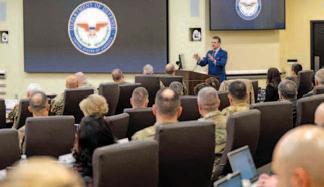
Defense Secretary Pete Hegseth speaks to Air Force senior leaders at the Department of the Air Force Summit at Joint Base Andrews, Md , March 19, 2025 (Air Force Senior Airman Madelyn Keech, DOD)
stewards of the taxpayer dollars,” Hegseth said
“But [President Donald J Trump] has repeatedly said that we're going to rebuild [the military] and the Air Force will be a huge part of how that [military] gets funded,” he added
every single day,” she said Her inspiring story was met with a standing ovation by the conference audience
Joy Buoncuore, supervisor of transportation scheduling for Constellation Energy, won this year ’s S&D Outstanding Achievement & Leadership Award (Photo courtesy NBAA)
Also, during the keynote, Joy Buoncuore, supervisor of transportation scheduling for Constellation Energy, accepted this year ’s S&D Outstanding Achievement & Leadership Award, thanking the committee for the privilege of following in the footsteps of previous recipients “This award is not just for myself,” Buoncuore said “It’s for every

Joy Buoncuore, supervisor of transportation scheduling for Constellation Energy, won this year ’ s S&D Outstanding Achievement & Leadership Award (Courtesy NBAA)
person who has helped mentor me, guide me and support me throughout the crazy journey that I’ve had ”
Also recognized were a number of SDC scholarship recipients and sponsors Learn more
When it came time to order a door for his new hangar in Godley, Texas, Mike Wagner didn’t hesitate to order a Schweiss Doors bifold liftstrap autolatch door.
The 40-foot by 14-foot bifold liftstrap door has an automatic latch system and remote opener It was painted red at the factory for Wagner ’s new 42-foot by 84-foot hangar
This marks the second time Wagner placed an order with Schweiss Doors The first was in 2006, when he purchased a 50foot by 16-foot bifold strap door with manual latches for his excavation company
Wagner decided to get back into flying after starting up his own installation business, which took him all over the country Now his flying is strictly for pleasure in his Mooney M2J
“I got my license in 1993 and was flying a lot until 2006, working as an





installation contractor for Home Depot for 15 years,” Wagner says.
His new hangar sits on his “back 40” farm property with an adjacent grass airstrip The outside of the bifold door is clad with metal R-panels
“I found the airplane before I got the hangar done and rented a hangar nearby for a brief time,” Wagner says “Over time, I should be money ahead, but it’s more for convenience than anything Hangar rentals are still pretty cheap, running about $400 a month It’s one of those things you just have to justify
“I first learned about Schweiss Doors while hanging around airports This is the second strap door I’ve installed It turned out perfect and matches my airplane I loved the first door ever since and never had a single problem with it. I literally never had to adjust it or do anything to it, so I decided to go back



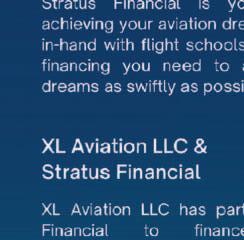
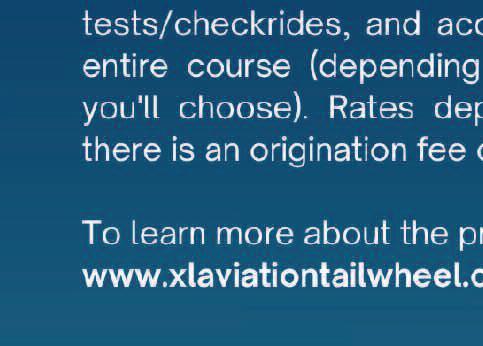

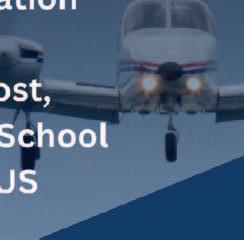

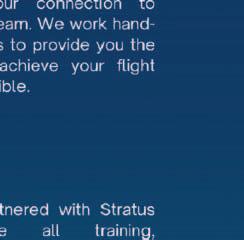

to a Schweiss door again I like how quiet the door is and how nice it looks. I like my new strap latch system without all the cables and springs. There are fewer moving parts.”
Wagner says the installation went off without a hitch
“The instructions and drawings are very professional and top notch,” he says “If somebody can’t figure out the instructions, there is a problem ”
Wagner says the people he talked to at Schweiss Doors were very helpful When he asked for longer bolts and red touch-up paint, they sent it right to him He said the door arrived in good shape and everything he asked for, Schweiss followed up on
Schweiss Doors is the premier manufacturer of hydraulic and bifold liftstrap






Mike Wagner ’ s hangar and bifold door are well insulated against the intense summer heat of the Dallas-Fort Worth area in Texas This was the second bifold door from Schweiss purchased by Wagner (Courtesy Schweiss Doors)
doors Doors are custom made to any size for any type of new or existing building for architects and builders determined to do amazing things with their buildings, including the doors Schweiss also offers a cable to liftstrap conversion package. For more information, visit www.bifold.com.











































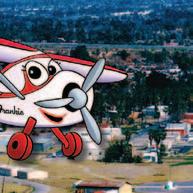



Students and pilots submitted more than 2,500 reviews, sharing their thoughts on instructors and flight schools vying for annual Flight Training Experience Awards The awards are part of AOPA’s “You Can Fly” program, which seeks to attract more people to flying and keep them engaged
Regional winners were notified in January and invited to Redbird Migration in Denver, where the national honorees were announced on March 5
The national award for Best Flight School was presented to In the Pattern in Denton, Texas, marking their achievement as the first-ever three-time winner of this prestigious honor. The national award for Best Instructor went to Tiziano Bernard, an instructor at Savannah Aviation in Savannah, Georgia
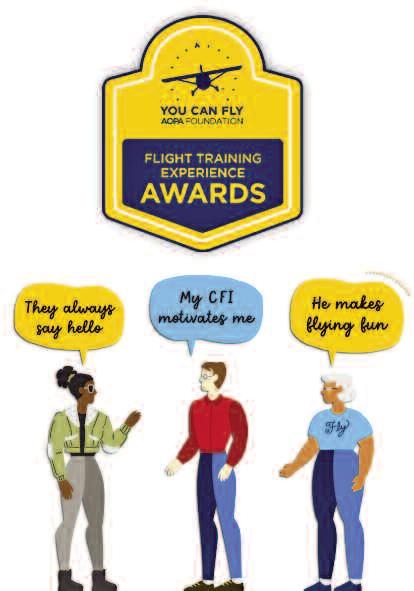






For this year ’s awards, AOPA moved to an application-based review process under which instructors and flight schools were invited to apply for regional and national recognition Applicants could request reviews from students, instructors, designated pilot examiners, and other clients who had worked with them during the previous 12 months A panel of industry experts then screened the applications without knowledge of the applicants’ identities
AOPA revamped the Flight Training Experience Awards for 2025, transitioning from a survey-based model to a more focused, application-driven approach.
(Courtesy AOPA)
school while in training, or even instructors driving out of their way to pick them up to make sure they could make it to their lesson ”
The 2025 regional best instructors are:
• Central Southern - John Schaffer (Texas Flight), Spring, Texas
• Eastern - Madison Nugent (Aviation Adventures), Leesburg, Virginia
• Great Lakes - Peg Ballou (Ballou Skies Aviation), Bucyrus, Ohio
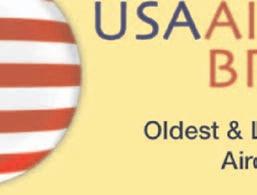













AOPA Foundation Senior Director of Flight Training Education Chris Moser said the new process provided more detailed, firsthand information about aviation educators seeking recognition. In addition to the regional winners, one school and one instructor from each of six regions, dozens more schools and instructors were recognized for “distinguished” performance
The awards program was created in part to highlight best practices, and help the entire industry focus on what works “We definitely saw a theme this year from the reviewers about a great combination of customer service and community,” Moser said
“Having a friendly and family-like atmosphere has always been a hallmark of excellent instructors and flight schools, but this year there was also a strong trend of describing some truly amazing ways that instructors and schools went above and beyond to serve their customers,” Moser said “Whether helping them find a place to live near the
• Pacific - Mike Smith (Mike Smith Aviation), Napa, California
• Southern - Tiziano Bernard (Savannah Aviation), Savannah, Georgia*
• Western - Jacob Peery (Flight Stars, Leopard Aviation), Scottsdale, Arizona
The 2025 regional best flight schools are:
• Central Southern - In the Pattern, Denton, Texas*
• Eastern - Air Ventures Flying School, Smithfield, Rhode Island
• Great Lakes - Ballou Skies Aviation, Bucyrus, Ohio
• Pacific - Flex Air, San Diego, California
• Southern - Sun City Aviation Academy, Davie, Florida
• Western - Chennault Flying Service, North Las Vegas, Nevada
*indicates the national winner in each category
To learn more, visit www aopa org

By Mike Taylor
he Utscheider gliding club celebrated its 50th anniversary on Sunday, Sept 1, 2024, hosting a festival at their airfield home in the South Eifel region of Germany Activities included sightseeing flights, balloon rides, and a potpourri of aircraft on exhibit for gander and gaze The variety of airships on display included many motorless and motor-assisted gliders, also sharing the turf with comparatively diminutive remote-control aircraft Rounding out festivities, participants enjoyed the traditional brats, beer and other gastronomies essential for such German gatherings
The event was held at Utscheid Segelflugplatz (translation: glider airport) in the Bitburg-Prüm district of western Germany Utscheid is a small community of around 400 residents Nearby to the east is the city of Bitburg, home to around 17,000 and the historic Bitburger Brewery The region, known as the Eifel, comprises a low mountain range along the German-Belgium-Luxembourg borders Hosting the celebration was the South Eifel glider flying club –Segelflugverein Südeifel The club boasts 50 active members, among some 130 in

Segelflugverein Südeifel, South Eifel Glider Flying Club, in the Bitburg-Prüm district of Germany. (Mike Taylor)
all according to staff
“It is the fascination of gliding that inspires many people,” said Rudolph Höser, a journalist and attendee at the friendly Flugplatzfest (translation: airfield festival) “Something big has come from small beginnings and we want to celebrate that appropriately,” stated the invitation to my balloon pilot friend from Bitburg, Peter Manns He was among a small group of local, commercial balloon pilots asked to display their aircraft at the festival
Hot air balloons are defined as nonpower-driven, lighter-than-air aircraft Balloons depend on mild winds for traversing the terrain At varying altitudes wind direction varies It is this phenomenon that an adept balloon pilot carefully monitors, allowing directional control of their aircraft
“Gliders do not need wind to fly Most of the time they use thermals, i e
air that rises in the atmosphere At the start, the glider is brought to a certain height by a winch or a motor plane,” explains Jörg Eppers, board member of the Utscheider gliding club, Segelflugverein Südeifel “Then it flies on a path that is slightly inclined downwards until it gains height again due to a so-called updraft ” These updrafts, or thermals, are created by a heating of the earth’s surface, usually from the sun As the air just above the ground warms, it rises displacing colder, heavier air above Thus, the normally lightweight glider aircraft ascend upwards for as long as the thermals can sustain them
Event organizer Peter Fabry shared, “Many preparations had to be made for the airfield festival, and the requirements of the air authority.” In years prior, Jupp Krämer, recently deceased, did much of the work, Fabry added. “Unfortunately we have to do without him today ”
1 Modern gliders easily reach speeds of up to 280 km/h, equivalent to 174 mph
2 A world record altitude for soaring at 14,102 meters (46,267 feet), was set by Paul Bickle in 1961 On September 2, 2018, Jim Payne flew his Perlan 2 to 76,124 feet after being towed to 60,000 feet
3 The longest glider flight in history is 3,055 kilometers (1,898 miles), set by Gordon Boettger in June 2023, breaking the 3,008 kilometers (1,869 miles) record achieved by Klaus Ohlmann in 2003 Spotted at the Utscheid event were a great variety of aircraft, both powered and motorless, including:
• D-MAYW Comco Ikarus C42B, a 2-seat microlight aircraft manufactured in Hohentengen, Germany (similar to the SkyReach Bushcat with a sewn wing covering)
• D-EPMS Cessna TU206F Turbo Stationair, a rugged 6-seat “utility” aircraft This one was freshly refurbished and serves as a jump plane (from Bitburg airport)
• D-MUBA Aeropro Eurofox 3K, a 2seat light aircraft manufactured in Slovakia. (resembling a Kitfox)
• D-ECKY Socata Rallye 180GT STOL, a tricycle gear, low-wing, short takeoff and landing 4-place aircraft man-
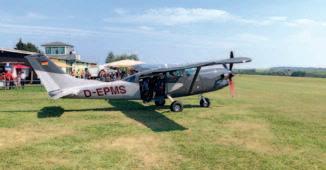
The Aircraft Owners and Pilots Association (AOPA), in partnership with more than a dozen other pilot organizations, and with the support of the FAA Safety Team, launched the 2025 National Pause for General Aviation Safety on April 1 at the Sun ‘n Fun Aerospace Expo
The initiative aims to further improve general aviation safety, and encourages every general aviation pilot to take 15-60 minutes in the next six months to sharpen their focus on safe flight operations by reviewing at least one of more than three dozen carefully curated safety videos, articles, and more, at GAsafe.org.
Despite several high-profile accidents this year, general aviation has never been safer thanks to improved cockpit technologies, training methods, programs and tools, regulatory frameworks, and industry collaboration
In the past 30 years, the general aviation fatal accident rate fell by 60 percent from a high in 1994 of 1 73 fatal accidents per
100,000 flight hours to only 0 68 fatal accidents per 100,000 flight hours in 2023 And early data suggests that 2024 was even safer
“We envision a day with zero fatal general aviation accidents, and we have come a very long way already,” said AOPA President and CEO Darren Pleasance “We are launching the National Pause for General Aviation Safety now so that we can draw attention to our successes and also refocus our efforts on making general aviation even safer ”
The coalition of more than a dozen pilot organizations, including Vertical Aviation International (VAI), the Experimental Aircraft Association (EAA), the National Business Aviation Association (NBAA), and the National Air Transportation Association (NATA), are urging their members to go to GAsafe org and choose from dozens of aviation-safetyrelated options, to find at least one most relevant to their flying Pilots can participate in the National Pause for GA Safety individu-
ally or in groups They can earn FAA WINGS credit and receive a digital badge to post to their social media accounts
“We think it’s important for all pilots to take a moment to think about what safety means to them, and in the context of the operations they fly,” said Pleasance “Whether you fly low and slow or high and fast, the National Pause for General Aviation Safety will inspire pilots to sharpen their focus on being a safer pilot ”
Mike Ginter, Senior Vice President of AOPA’s Air Safety Institute added, “At ASI, we believe every GA pilot has a responsibility to themselves, their loved ones, the industry, and the public to be as conscientious, disciplined, and deliberate about general aviation safety as possible Taking this pause will make all of us safer pilots ”
Below is the full list of organizations that are part of the initiative:
• Aircraft Owners and Pilots Association (AOPA)
• American Bonanza Society (ABS)
• Citation Jet Pilots (CJP)
• Civil Air Patrol (CAP)
• Experimental Aircraft Association (EAA)
• FAA Safety Briefing
• FAA Safety Team (FAASTeam)
• Flight School Association of North America (FSANA)
• National Air Transportation Association (NATA)
• National Agricultural Aviation Association (NAAA)
• North American Trainer Association
• National Association of Flight Instructors (NAFI)/li>
• National Business Aviation Association (NBAA)
• National Flight Training Alliance (NFTA)
• Piper M-Class Owners and Pilots Association (PMOPA)
• Recreational Aviation Foundation (RAF)

The Travel Air Restorers Association Type Club will be celebrating the 100th anniversary of the founding of the Travel Air, Inc , by Walter Beech, Lloyd Stearman, Clyde Cessna and Walter Innes in 1925 in Wichita, Kansas The celebration will be held starting on Thursday, July 10th through Sunday, July 13th at Stearman Field (1K1) in Benton, KS with activities on Saturday at Jabara Field (AAO) All Travel Air owners and enthusiast are invited to attend and be apart of this once in a life time event The celebration will continue with a flight north to Oshkosh, WI for the EAA Air Venture event, with a stop in Blakesburg, IA for a BBQ hosted by the Antique Airplane Association Contact Jerry Impellezzeri at clear prop2003@yahoo .com for more information.
While at EAA AirVenture See Travel Air E-4000 Aircraft researched by EAA volunteer Fred Stadler
EAA’s 1929 Travel Air E-4000 opencockpit biplane (NC648H, serial number 1224) is among the last flying examples of the aircraft that launched American aviation and earned Wichita, Kansas, the title of “Air Capital of the World ”
The Travel Air Company was formed January 1925 in Wichita, Kansas by former employees of the Swallow Aircraft Manufacturing Company Starting with a 900 square foot factory and six employees, the company grew by 1929 to 650 employees working two shifts in a state-of-the-art aircraft production facility About 1,800 Travel Air aircraft were built in less than half a decade Most were biplanes, using 16 basic designs The company was unable to survive the Great Depression and was absorbed into the Curtiss-Wright Aeronautical Corporation Travel Air offi-

aviation (Courtesy EAA)
cers included Clyde Cessna, Walter Beech, and Lloyd Stearman, who later formed their own well-known aircraft companies
The Travel Air E-4000 model was designed to compete with inexpensive World War I surplus Standards and Curtiss “Jennies ” Its major feature was a forward cockpit wide enough to accommodate two passengers (at least by 1929 standards!) Its rugged landing gear used rubber “bungee” shock cords, allowing landings on unimproved fields
EAA’s Travel Air was among the last produced Built in July of 1929, it sported a Wright “Whirlwind” J-6, five-cylinder engine, producing 165 horsepower Bill Shank, one of America’s first civilian airmail pilots, was the plane’s first owner and the Shank family operated it from Indianapolis, Indiana for almost 30 years
The aircraft was later donated to EAA and fully restored by EAA staff and many volunteers, including Gene Chase and Jim Barton.
A more reliable, seven-cylinder, 220 horsepower Continental R670-4 engine was installed with a ground adjustable Hamilton Standard propeller This engine/propeller combination was used on thousands of Stearman trainers during World War II The aircraft was fitted with Schweizer release
Centennials for Fairchild, Travel Air Aircraft to be Celebrated at EAA AirVenture Oshkosh 2025
Two iconic aircraft types from the Golden Age of Aviation between the World Wars, Fairchild and Travel Air, will celebrate their centennial years during activities at EAA AirVenture Oshkosh 2025 The 72nd annual Experimental Aircraft Association fly-in convention is July 21-27 at Wittman Regional Airport in Oshkosh, Wisconsin
The 100th anniversary year for each aircraft will welcome those airplanes to the AirVenture flight line, with additional programs and activities held in conjunction with the Fairchild and Travel Air type clubs. All owners of Fairchild and Travel Air aircraft are invited to be part of the centennial activities.
“Each of these aircraft companies were founded in 1925, but took very different paths through their histories,” said Rick Larsen, EAA’s vice president of communities and member programs, who coordinates AirVenture features and attractions “Each of these aircraft types made unique contributions to the world of flight, especially the momentous era from 1920 until 1940 ”
Fairchild Aircraft was founded in 1925 as a builder of aircraft stable enough for aerial photography and mapping While the company created a significant number of civilian passenger airplanes in its first 15 years, it was during World War II that the company turned to military aircraft production, especially trainers and transports It continued that focus through acquisi-
hooks for banner towing Its original, narrow wheels were replaced with wider ones, offering better flotation on soft ground
The airplane is now in regular flight
tions of Hiller Aircraft and Republic Aircraft in the 1960s Its final major production aircraft was the legendary A-10 Thunderbolt II, also known as the Warthog, from 1972 through 1984
The EAA Aviation Museum currently has the oldest Fairchild aircraft in existence, a 1927 FC-2W model It is in early American Airlines markings as it served as an early carrier after flying for Interstate Airlines
The Travel Air Manufacturing Company’s short history was a partnership of three famous names in aviation history: Walter Beech, Clyde Cessna, and Lloyd Stearman of Wichita, Kansas. The three men were part of the Swallow Aircraft Company but in 1925, struck out on their own to create versatile biplanes in a 30-by-30-foot space in downtown Wichita After some early success, the partnership separated with Stearman and then Cessna moving to their own businesses The company was eventually absorbed into the Curtiss-Wright Corporation in 1929 and ended production in 1931 during the Great Depression
EAA continues the legacy of the company with its Travel Air 4000, which is one of the oldest aircraft in the world offering passenger flights with its seasonal operations at the EAA Aviation Museum’s Pioneer Airport.
Learn more, including advance ticket and camping purchase, at www EAA org/airventure or www EAA org
service at EAA’s Pioneer Airport Each flying season it delights aviation museum visitors with the sights, sounds and thrills of open-cockpit biplane flight
By Maj. Rachel Buitrago 7th Air Force
U.S. Air Force and Republic of Korea Air Force F-35A Lightning IIs joined a U.S. Navy F-35C Lightning II for integration training during exercise Freedom Shield 25, March 13, at Osan Air Base, Gyeonggido, South Korea
During the training, the F-35C, assigned to Strike Fighter Squadron (VFA) 97, integrated with two U S F35As assigned to the 134th
Expeditionary Fighter Squadron and two ROKAF F-35As assigned to the 17th Fighter Wing, conducting a combined operation in support of FS25. The event highlighted the capability of U.S. and ROK forces to seamlessly integrate air, ground and maritime operations, reinforcing their enhanced combined defense posture
The joint, all-domain nature of FS25 challenges forces to respond to dynamic threats across ground, air, naval, space, and cyber elements, enhancing combat
readiness and ensuring that both nations are prepared for any crisis The participation of naval aircraft from the Nimitzclass aircraft carrier USS Carl Vinson (CVN 70) brought a critical maritime element to the live-fly events of the exercise, enabling the full rehearsal of air component assets to achieve combatant commander priorities
Prior to the joint training event, the ROKAF and USAF F-35As participated in dynamic targeting and aerial refueling training, validating the capability of ROK
and U S Air Forces, to find, fix, and defeat a range of threats
“Rehearsing combat operations with ROKAF, USAF, and United States Navy fifth-generation aircraft demonstrates the unmatched, high level of readiness and capability of our forces,” said Lt Gen David Iverson, Seventh Air Force commander “By integrating our advanced forces and weapons across all domains, we’re demonstrating our combined commitment and ability to defend the peace and stability of the peninsula ”
Aircraft Spruce & Specialty Co and its sister company Aero Performance recently celebrated the grand opening of its new 38,000-square-foot distribution center inside AllianceTexas, Hillwood's 27,000-acre master planned development
Aircraft Spruce & Specialty Co has been the go-to supplier for aircraft builders, owners, pilots and aviation businesses since 1965 Aero Performance, founded in 2002, is a leading distributor for aviation product manufacturers This includes parts to corporate operators, flight schools, military and government customers nationwide
“We’re honored to be in the aviation hotbed that is AllianceTexas. My parents founded Aircraft Spruce in the basement of our family home in 1965, selling only aircraft grade spruce I grew up in the business, and in 1980, Nanci and I assumed leadership of the company, which had 25 employees in Fullerton, Calif It has been a very rewarding journey, and our three sons now represent the third generation of Irwin family management at Aircraft Spruce,” said Jim Irwin, President of Aircraft Spruce & Specialty Co
Hillwood Construction Services was the general contractor on the new distribution center, and the project was completed in late 2024 The new facility replaces a 10,000-square-foot facility in Fort Worth where the company operated since 2014
“North Texas has long been synonymous with aviation and aerospace excellence, with major industry players such as Lockheed Martin Aeronautics, Bell Textron, American Airlines, Southwest Airlines and Boeing’s Global Services all calling Dallas-Fort Worth home And it’s great to see a family-owned company like Aircraft Spruce continuing its growth at AllianceTexas,” said Ross Perot, Jr ,

Roanoke Mayor Carl E "Scooter" Gierisch joined Hillwood Chairman Ross Perot, Jr , Aircraft Spruce President Jim Irwin and Vice Presidents Nanci, Mike, Jeff and Rob Irwin on March 8 for a ribbon cutting and tour of the Aircraft Spruce’s newest distribution center in Texas (Courtesy Aircraft Spruce)
Chairman of Hillwood.
Roanoke Mayor Carl E “Scooter” Gierisch joined Hillwood Chairman Ross Perot, Jr , Aircraft Spruce President Jim Irwin and Vice Presidents Nanci, Mike, Jeff and Rob Irwin at an event on Saturday, March 8 In addition, more than 400 Aircraft Spruce and Aero Performance customers, leaders and guests gathered to cut the ribbon and tour the company’s newest distribution center
“We are thrilled to welcome another outstanding family-owned business to the City of Roanoke, Texas! Aircraft Spruce and Aero Performance are leading distributors in the general aviation industry and are celebrating 60 years of success We are confident they will bring excellent opportunities to our rapidly growing region,” said Roanoke Mayor Gierisch.
For more information, see the company websites at www aircraftspruce com and www aeroperformance com For more information about Hillwwod, visit www hillwood com and for information about AllianceTexas, go to www alliancetexas com
Continued from Page 40
• Seaplane Pilots Association (SPA)
• Society of Aviation and Flight Educators (SAFE)
• The Ninety-Nines, Inc , International Organization of Women Pilots (99’s)
• United States Parachute Assoc (USPA)
• Vertical Aviation International (VAI)
Since 1950, the AOPA Air Safety Institute has been working to create a safer culture for general aviation through knowledge, training, and proficiency As the world’s largest provider of free general avi-


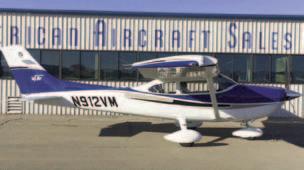


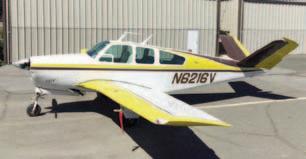
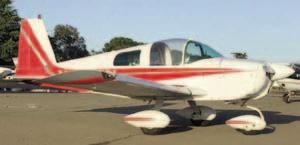
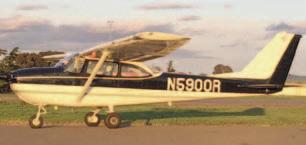

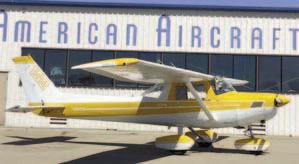
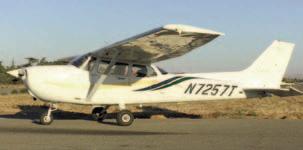
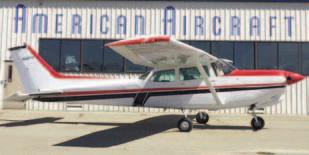
ation safety content, ASI is responsible for guiding and positively influencing pilot behavior, policymakers, manufacturers, and training providers with engaging material, thoughtful research and analysis, and modern, effective outreach. In addition to its best-in-industry online flight instructor refresher course, ASI offers more than 300 free online safety programs including videos, podcasts, webinars, publications, courses, and quizzes that are funded by the AOPA Foundation To learn more, visit ASI at www airsafetyinstitute org
To learn more about AOPA, visit www aopa org












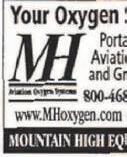

Continued from Page 40
ufactured in France. (a rare design combination)
• Towing aircraft in the glider club, according to Fabry, include:
• D-KIKD Diamond HK36TC Super Dimona, manufactured in Austria, taildragger and towplane (called the Katana Xtreme in Canada and the U S )
• D-KMUH Scheibe SF-25C-TL Rotax-Falke, manufactured in Heubach, Germany, motor glider and towplane

A unique winch
“Godzilla”

their unique radial engine pop-pop-pop
According to Fabry, the two “Texans” hail from Bitburg, where the Spangdahlem NATO Air Base has been in operation since 1952 Transported skyward by the Turbo Stationair, a team of jumpers parachuted atop the crowd colorfully touching down midfield on the hilltop green meadow
glider
• D-MLOB AeroSpool WT9 Dynamic, ultralight aircraft and towplane
An array of gliders are used by club members, including:
• Two 2-seaters: Schleicher ASK 21 and DG Flugzeugbau DG-1000S
• Four single-place sailplanes: Rolladen-Schneider LS3 and LS4, Grob G102 Astir, Schleicher ASK 18
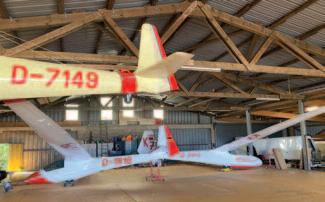
Among the sailplane/gliders on display in the hanger and on the field were: D-4121 (Ka 6), D-7149 (Schleicher Ka 6E), D-9570 (LS 3), D-1510?, D-9055 (Scheibe L-Spatz 55), D-1818 (Schleicher ASK 18), D-5414 (Schleicher Ka-7 Rhonadler), D-6556 (Schleicher ASK 21), and D-9940 (DG 1000S 20m).
The event provided a well-rounded exhibition of aviation exploits, including two throaty T-6 Texans vintage military trainers manufactured by North American Aviation The duo performed low passes over the runway delivering
From my perspective, glider flying as a sport seems more prevalent in Germany when compared the U.S. However, at the airport near where I live in Texas (5C1, Boerne Stage) there exists a glider club An abundance of motorized aircraft at the airport, used for both sport and business, far outnumber the gliders The San Antonio Soaring Society operates two Grob G103C Twin III Acro aircraft and promotes the activities of the club where conditions are apparently favorable for the sport In the U S gliding is often called “soaring ”
Back on the European continent, I highly recommend taking a look at Aero Friedrichshafen the closest overseas alternative to AirVenture Oshkosh if gliding, or flying for that matter, is of interest. Aero, as it’s simply called,
“Europe loves its gliders, such as the L23 Super Blaník all-metal glider remake In 2019 the ‘sailplanes’ displays were moved to Hall A1 at the main entrance ”
Learn more at https://mtay .us/aero-friedrichshafen-2019 -show-capsule/
devotes an entire hall to gliders, one at the front, and the largest of its 12 impressive exhibition spaces.
There’s no doubt gliding is popular around the world, but like ballooning it’s decidedly a weather dependent activity
With good fortune, the airfield festival at Utscheid in 2024, fell on a beautiful summer day Just prior to and following the
weekend, the weather exhibited a more typical, cloudy and damp seasonal scud. The Eifel region is peppered with numerous river valleys where fog often rises before the cows and fowl of the region A convivial number of visitors and optimum weather made for a perfect weekend glider experience
As with any means of people-moving, energy management, i e momentum, is key to balancing safety and speed This is especially true in a sailplane, as there is no reserve thrust or acceleration should a situation may demand it Pilots will agree that energy management is an art form in the sport of gliding; and that energy can only come from optimum planning, timing and instinct. The glider pilot can ultimately rely on air brakes for effectively dissipating excess lift energy on landing Likewise, for any pilot a well-timed spot landing is an art, and brakes only make the difference between a safe landing and an incident
In a tightly regulated Germany, aircraft of all types play well together The U S has five major air bases in the country, among over 40 military installations Gliders, jets, piston powered aircraft, whirlybirds, and parachuters all share the same sky whether flying commercial, military, for business or sport
Jumpers to the south of Spangdahlem Air Base can been seen frequently at the skydiving club Fallschirmsportclub Trier (literally translated as parachute sports club), near the city of Trier Here, club members set up and launch directly beside the oftenmanned control tower at Trier-Föhren Airport Despite generous helpings neither of which espouse a favorable meaning of red tape in the Federal Republic of Germany, flying under a black-red-gold tricolor flag, sport in aviation is strong Germany is said to be both the birthplace of flying and the center of the gliding world
When the Americans opened up Germany’s airspace again, post-WWII, the farmer created the flying field and, in 1955, moved his plane closer to home
The delightful location includes a biergarten/cafe for watching the airfield’s activities Just another of Germany’s delightful aviation surprises

A winged, twin-engine cow pays homage to the former farm at Flugplatz Wilderberg (Mike Taylor)
Seeing the world through wraparound sunglasses, flight goggles, or classic Ray-Ban aviators, flying is unequivocally a vision-centric occupation And with eyes wide open, pilots and non-pilots alike enjoy the great marvel that is flight, an incomparable lightness of being To Mark Twain, flying was “the air up there in the clouds very pure and fine, bracing and delicious the same the angels breathe ”
“And so many visitors came to celebrate the anniversary with the club. With free admission, the grounds filled up quickly Visitors took the opportunity to take sightseeing flights and balloon rides
The Bitburg parachutists showed their skills, members of the Adler Südeifel model aircraft club exhibited And if a boy wanted to sit in the cockpit of a glider, that was possible too So the airfield festival anniversary was a well-round affair,” summarized Rudolf Höser
If you get the chance, visit Utscheid where the setting is lovely, the folks are friendly, and you can be assured there are many English-speaking folks in the region who share your love of flight
Editor ’s Note: Copy and photos by By Mike Taylor
https://mtay.us/gliding-in-the-eifel-celebrating-50-years/
Credit in part to Rudolf Höser h t
s 4 piapps com/artikel/1018185/32394717#
While departing Aero in 2017, via rental car, I crossed beneath the approach end of an active airport. A mix of powered aircraft and gliders were taking advantage of lush green turf on rolling hills at Flugplatz Wildberg There I encountered Hermann Beck of Flugschule Hermannwings The friendly owner, and retired pilot (professedly at the age of 41), had bought the airport from the original owner/farmer who had a Cub he kept nearby in Switzerland

"Because
– Erwin L. Samuelson, M.D
"I
“They






known

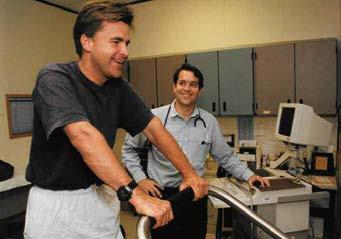





Skylark Shores Resort is located on beautiful Clear Lake in Lakeport, California. Our resort has spacious lawns rolling up to the lakeshore with breathtaking views of Mt. Konocti, Clear Lake’s volcanic companion. Skylark Shores features lakefront guest rooms, lawn front guest rooms, poolside guest rooms, and five small-to medium-size cottages for your privacy.

